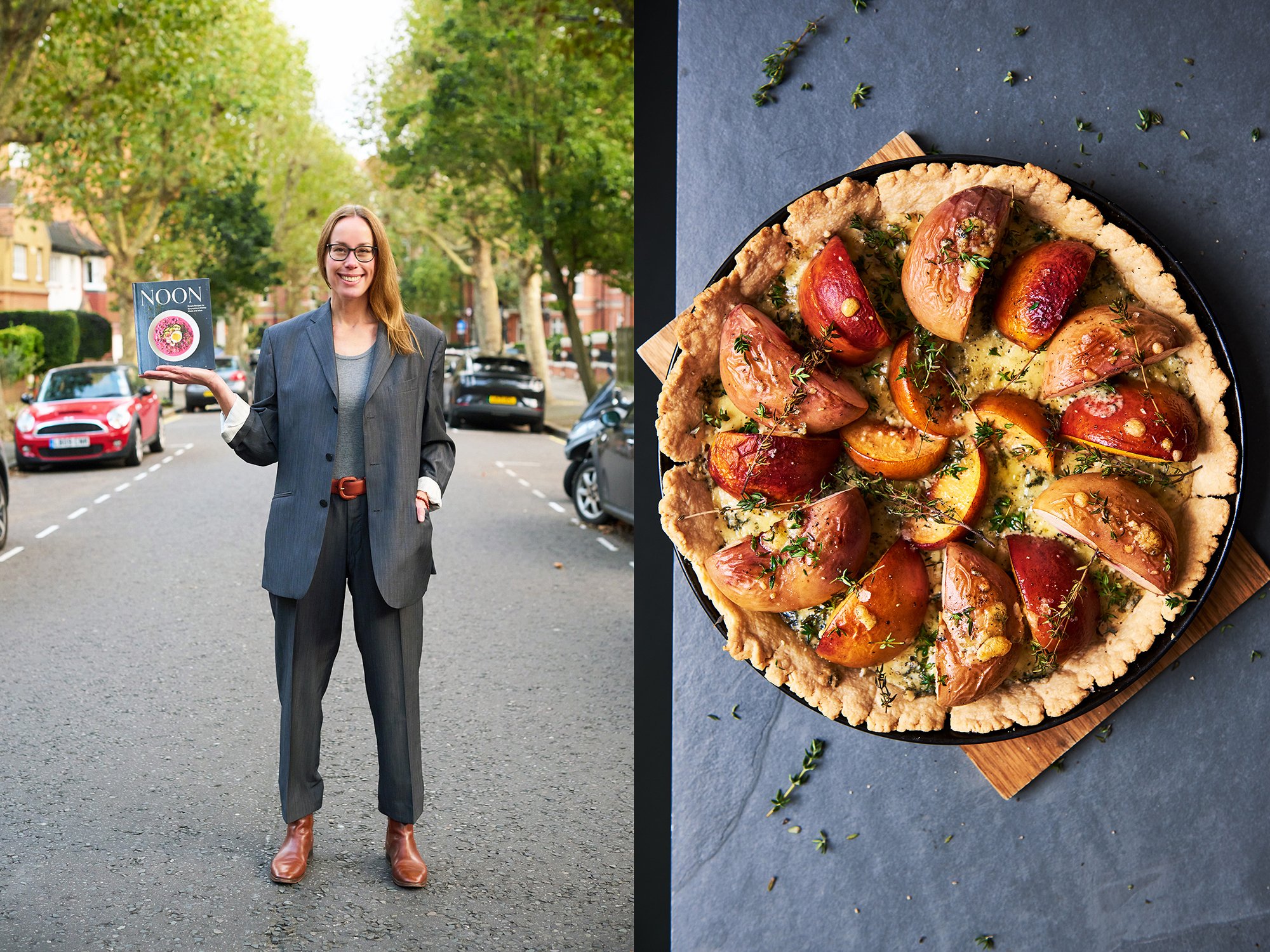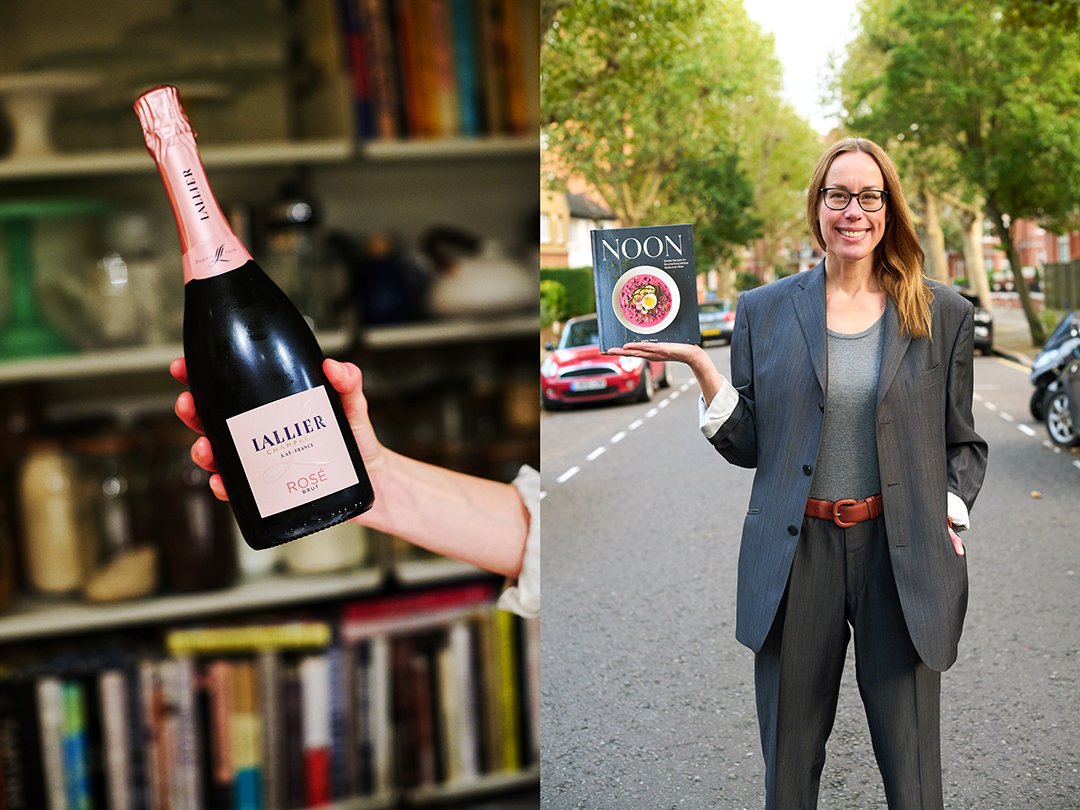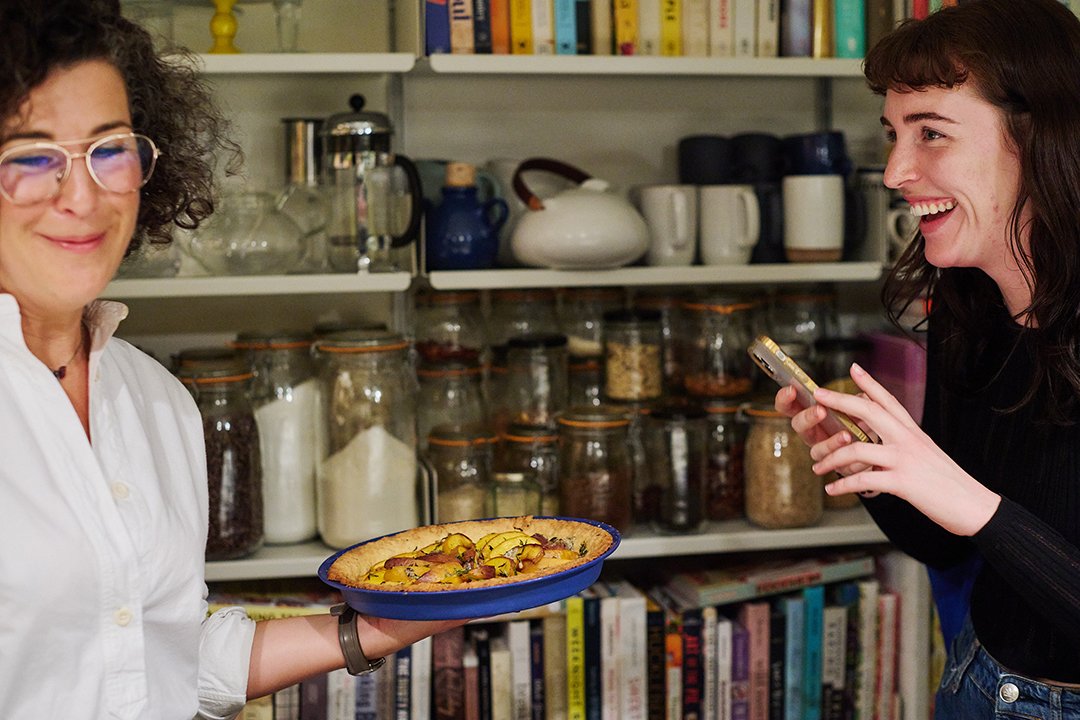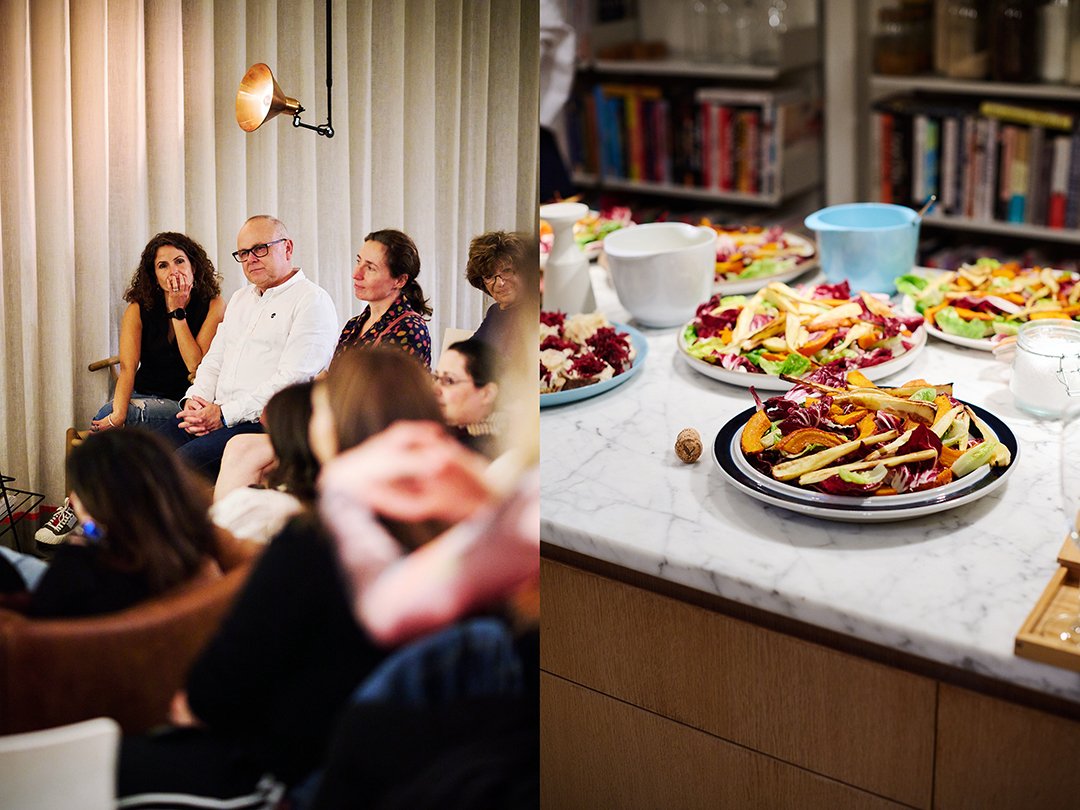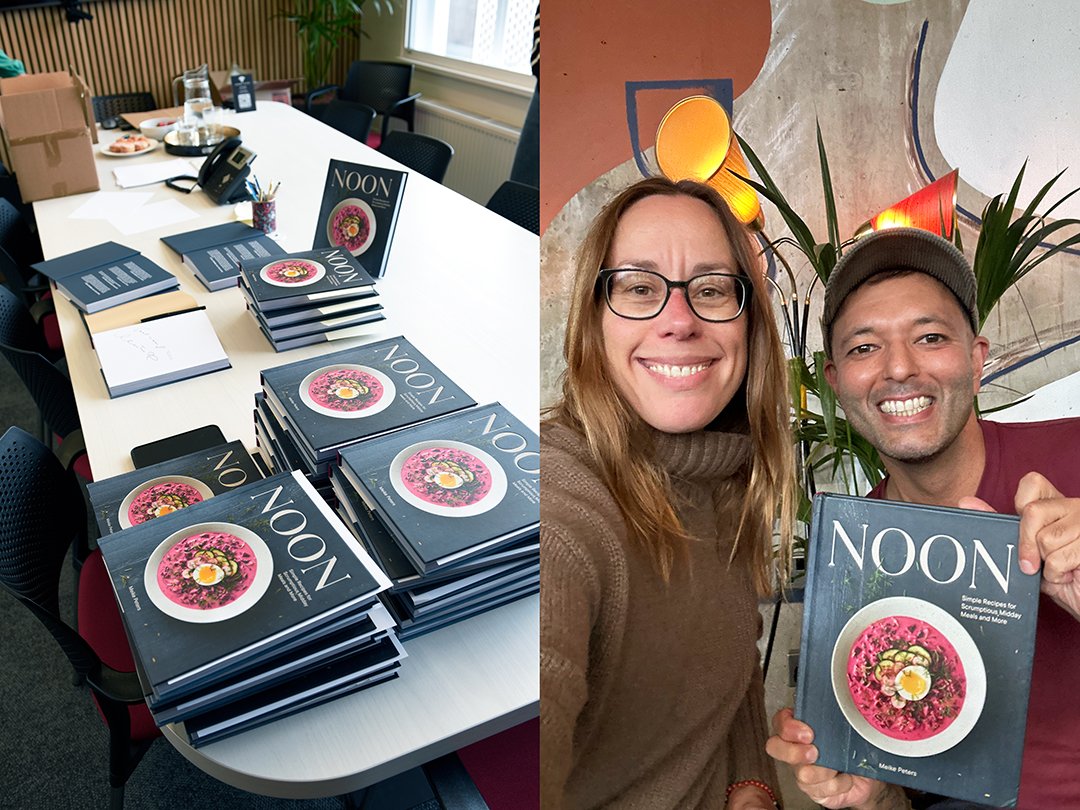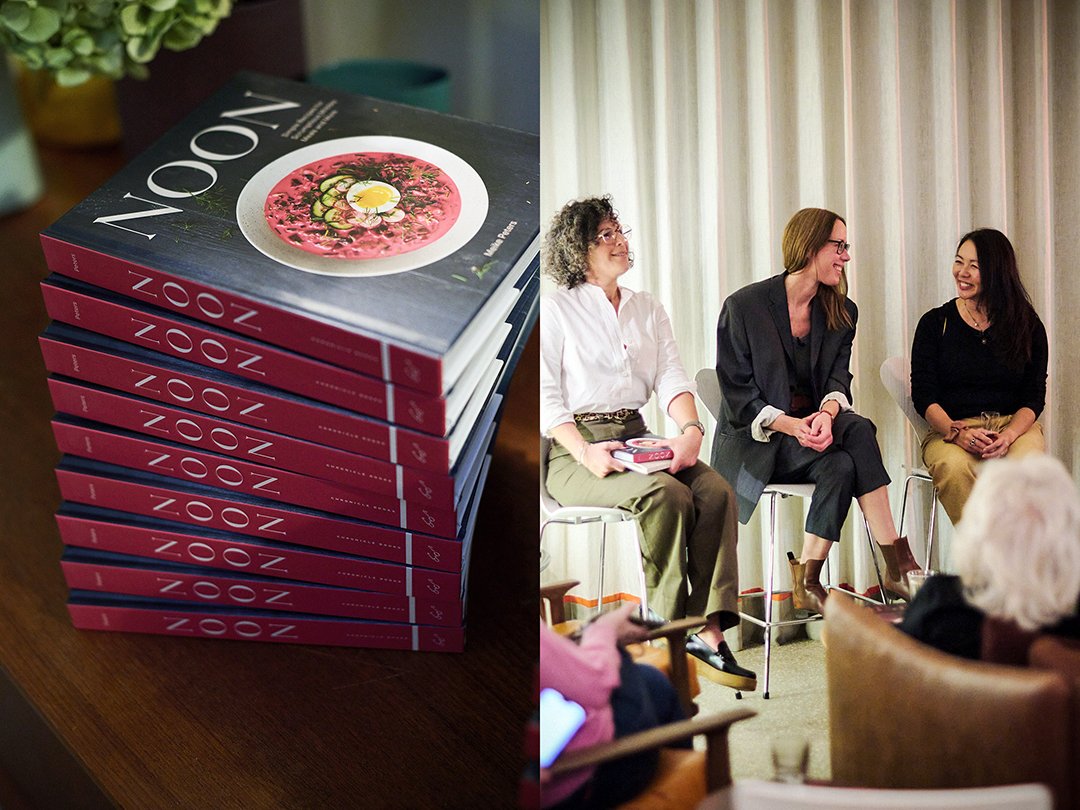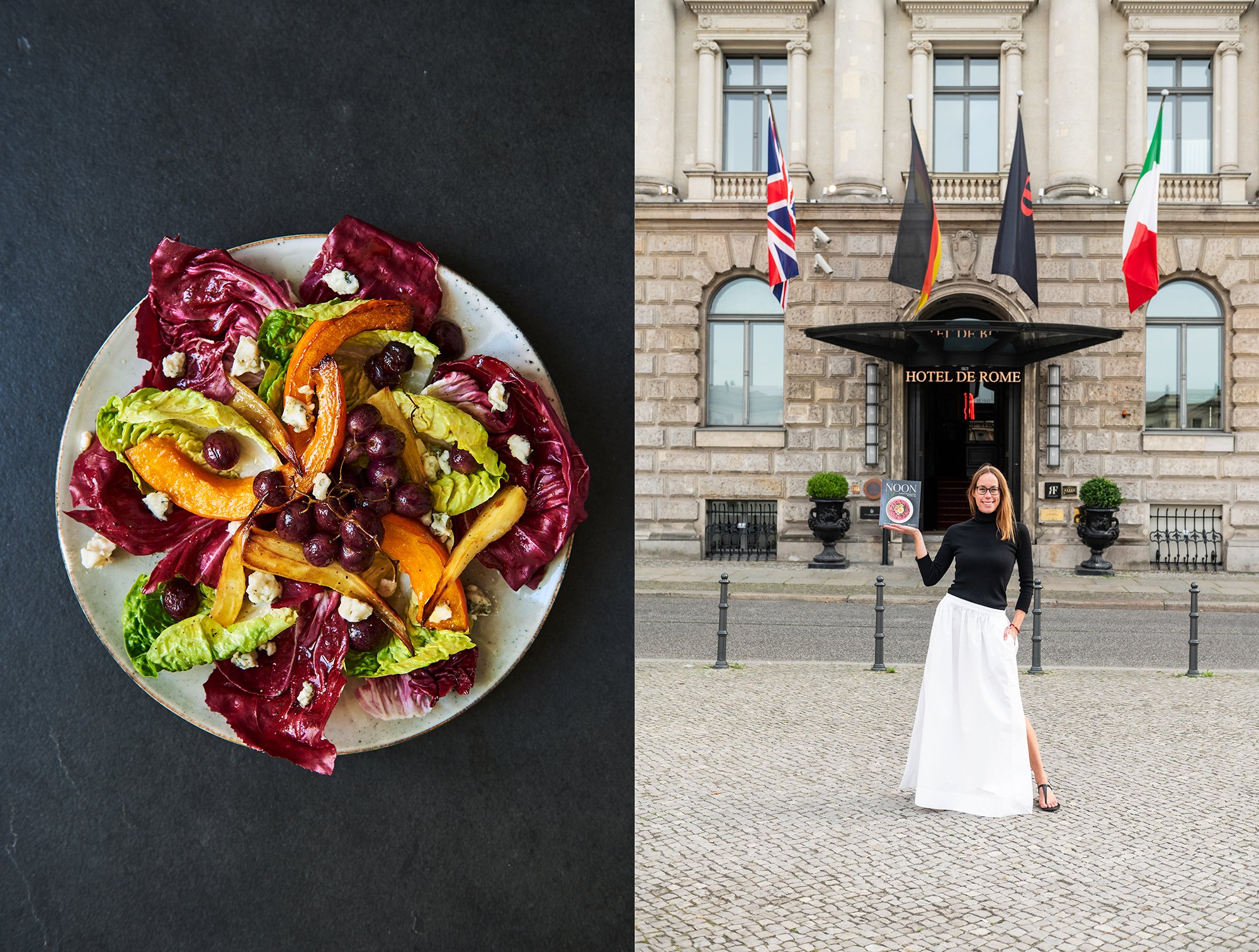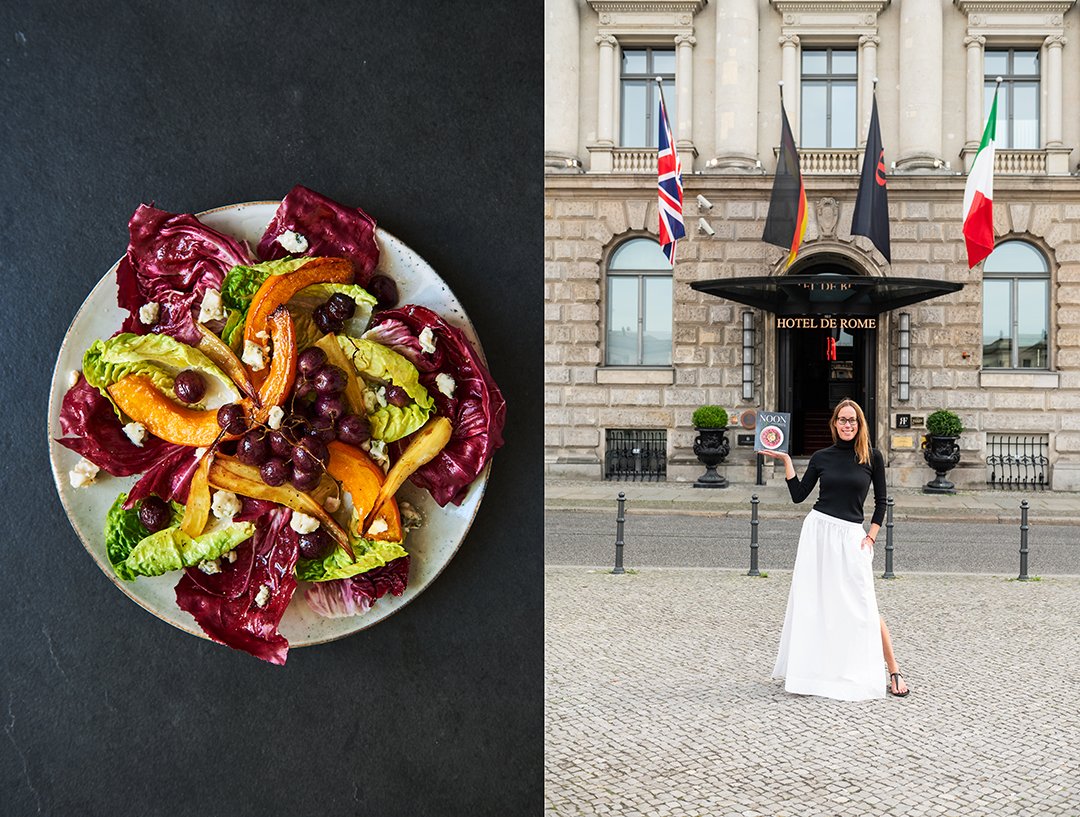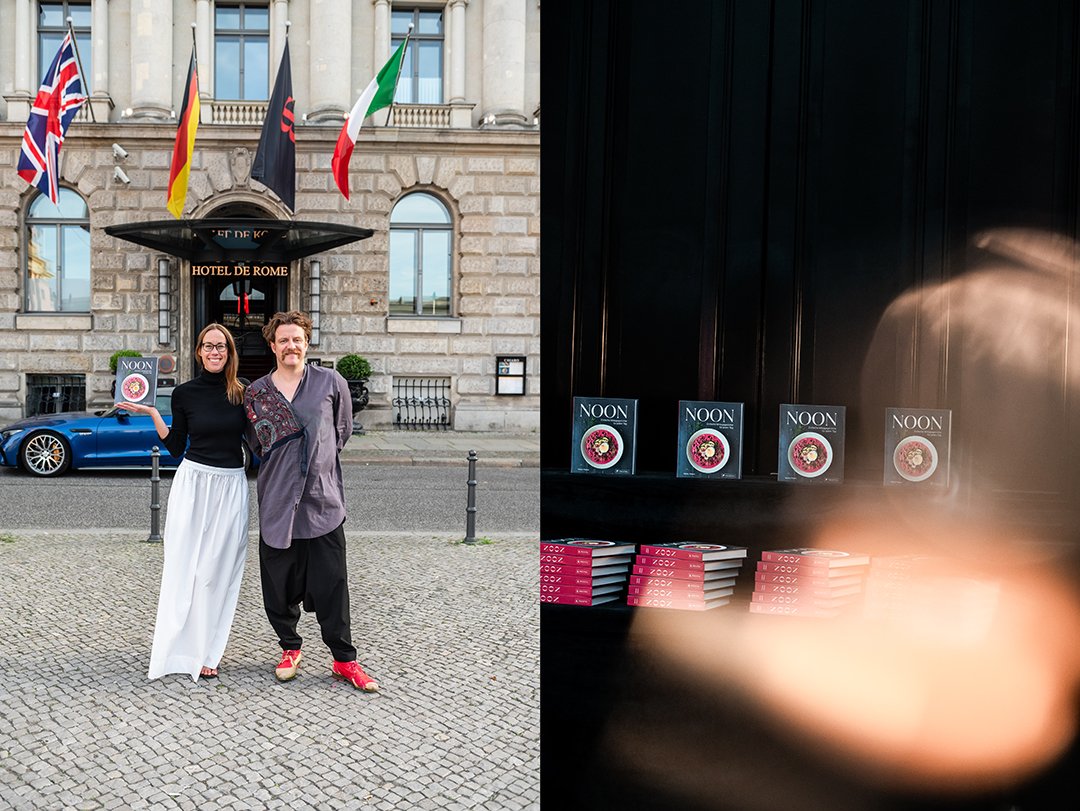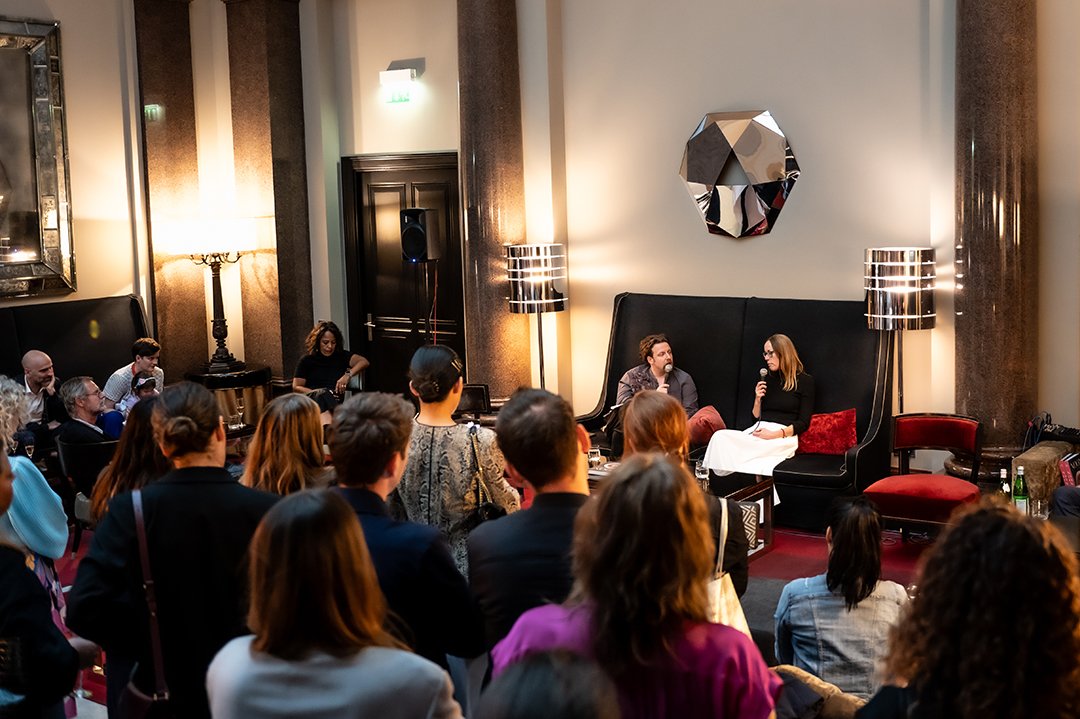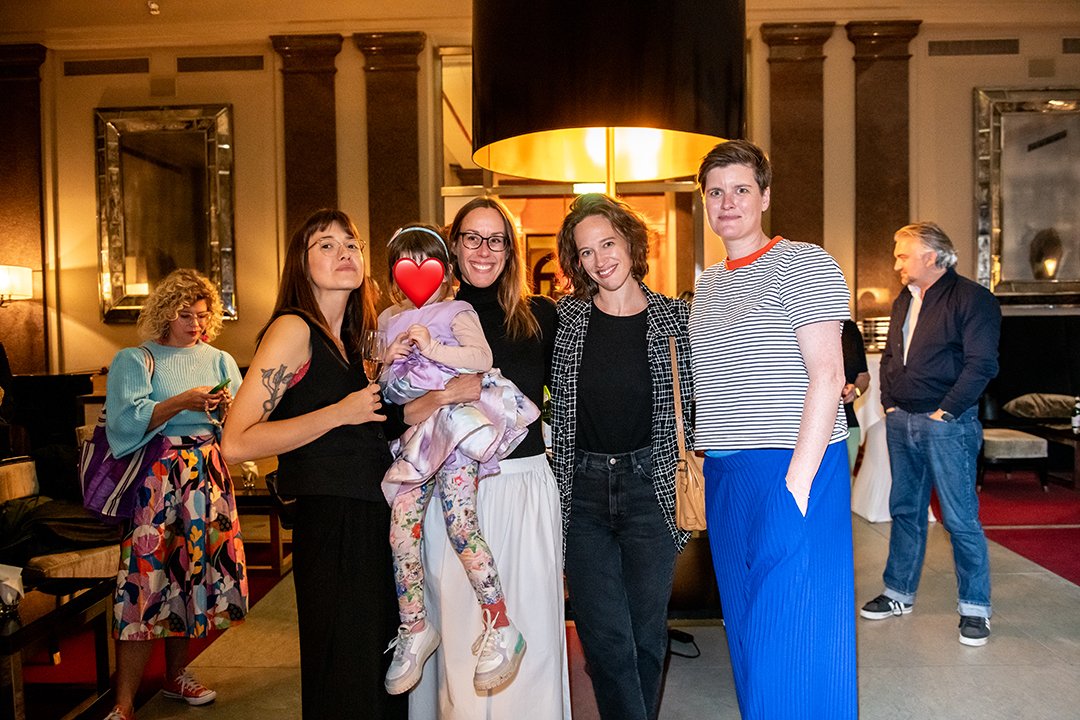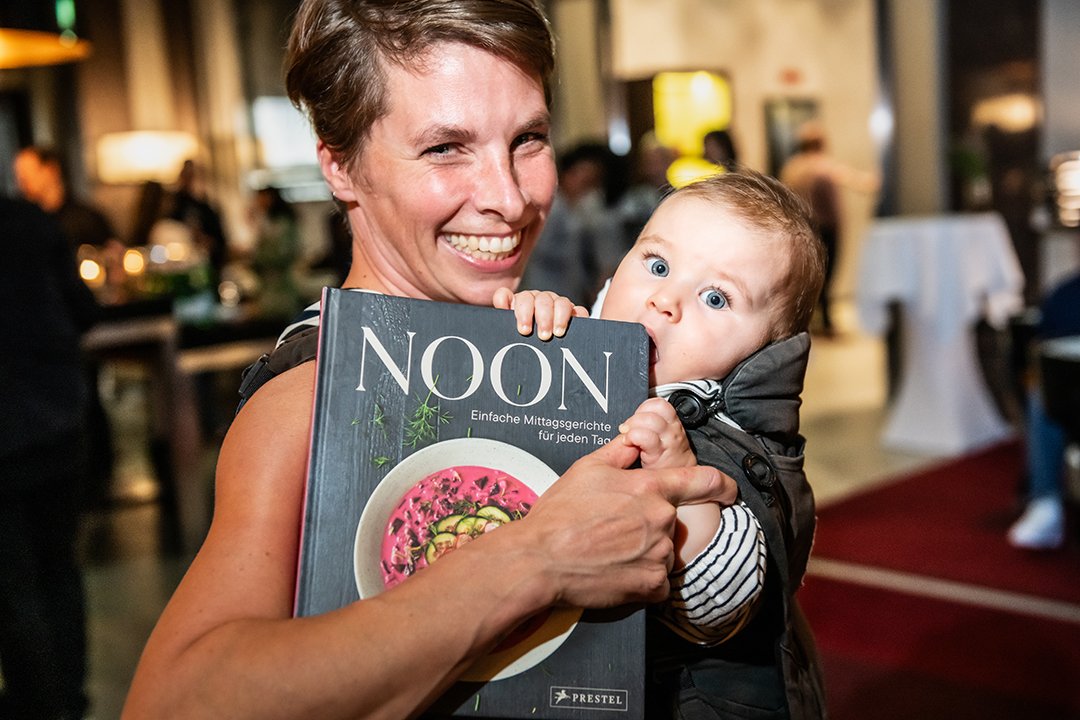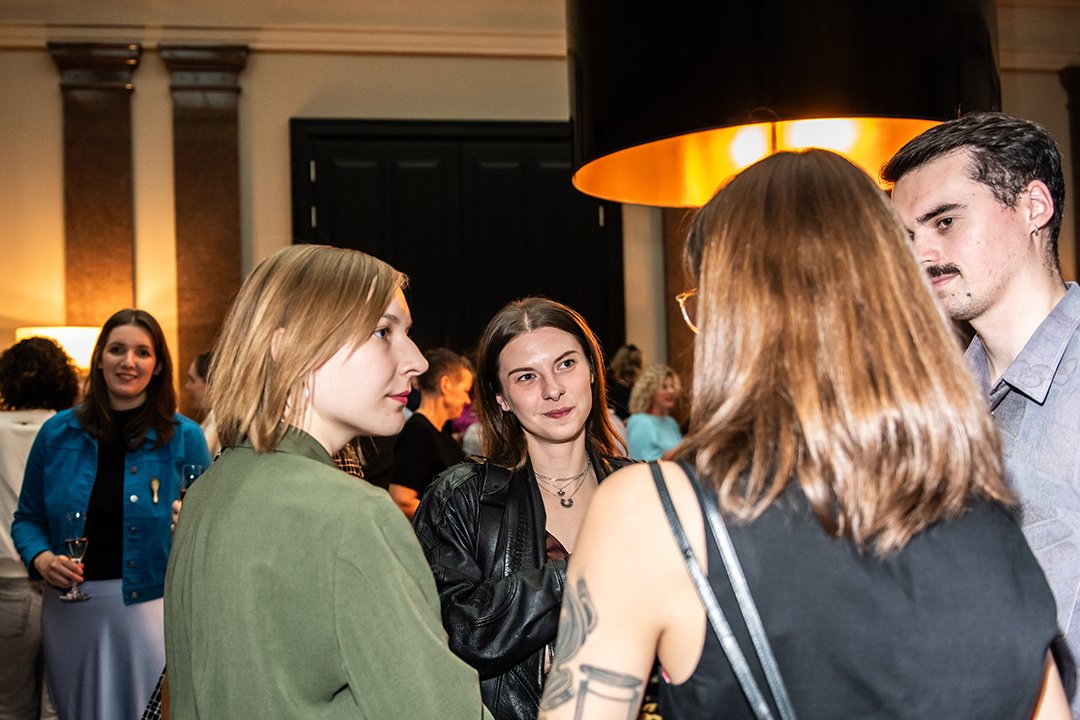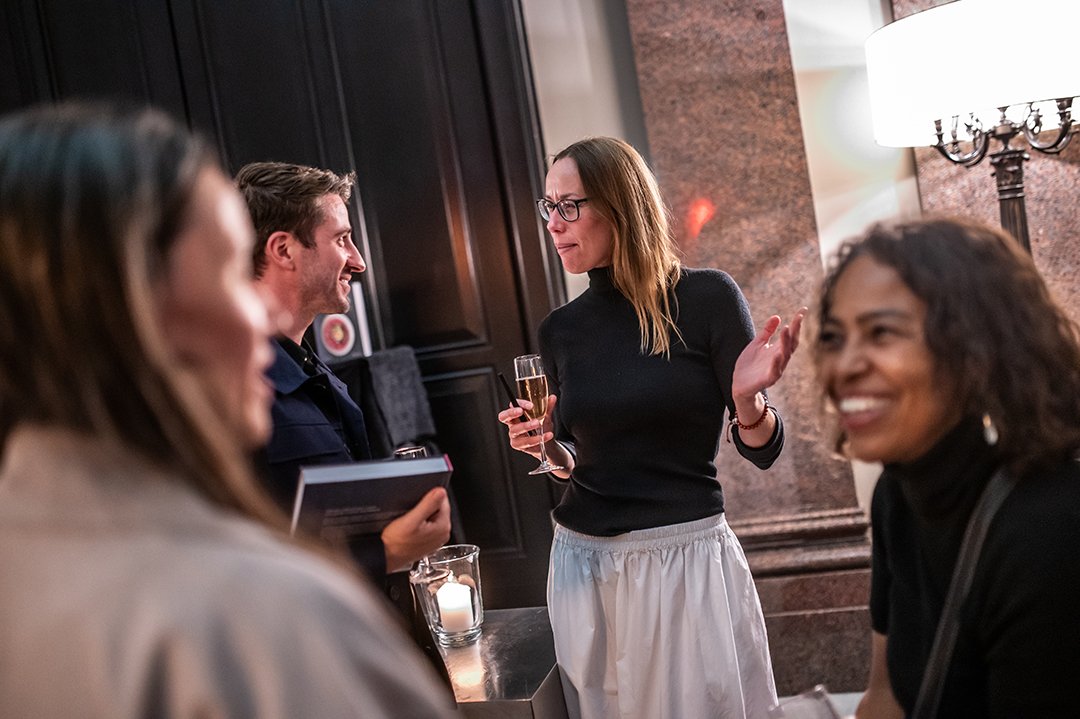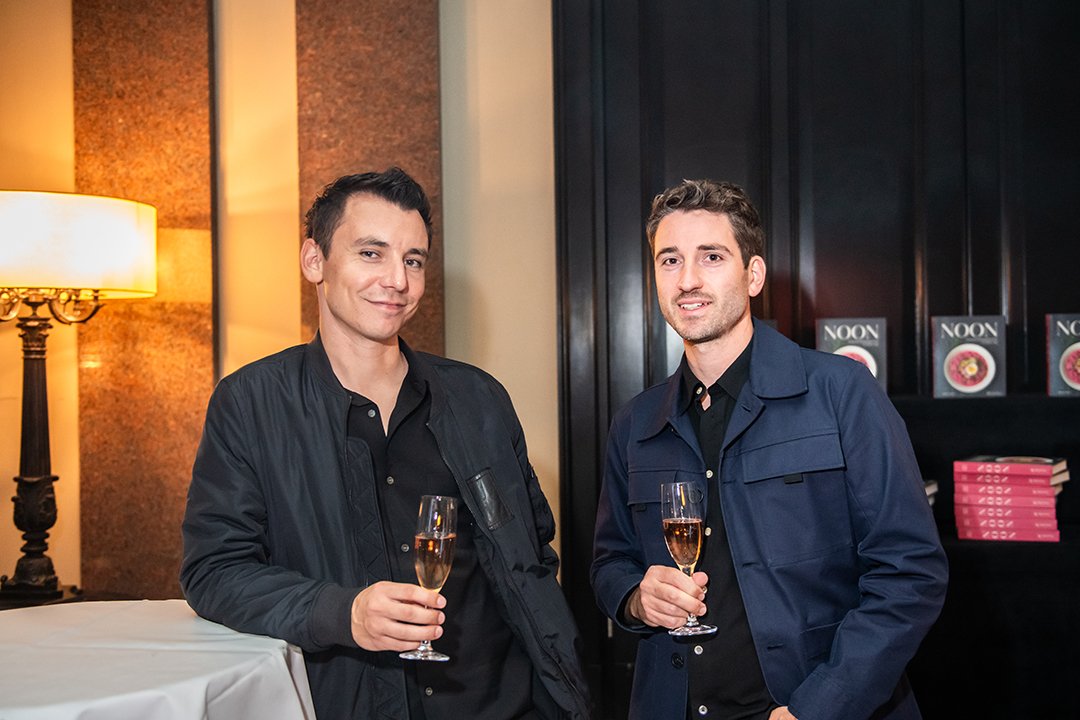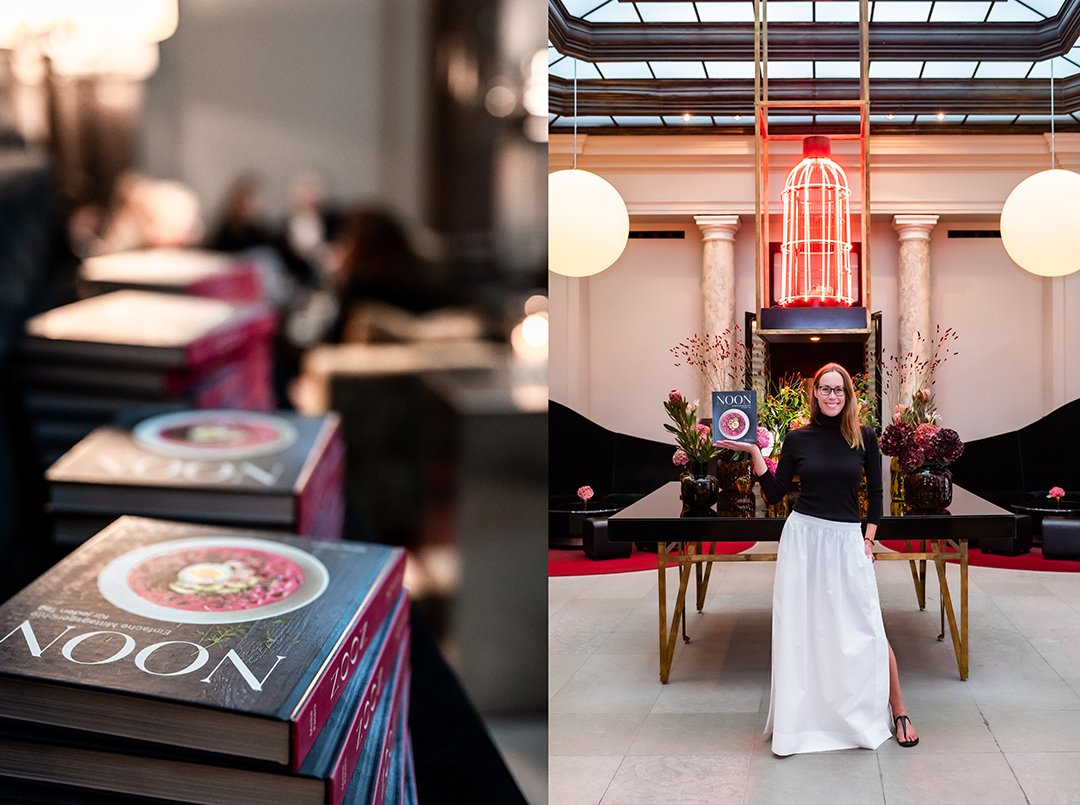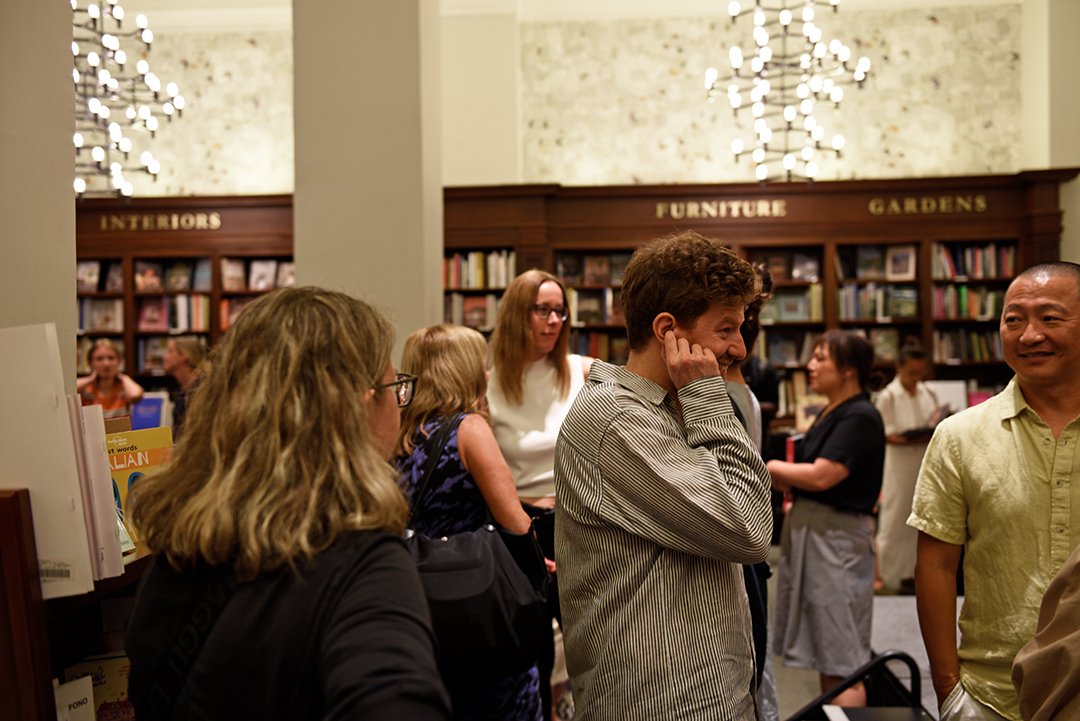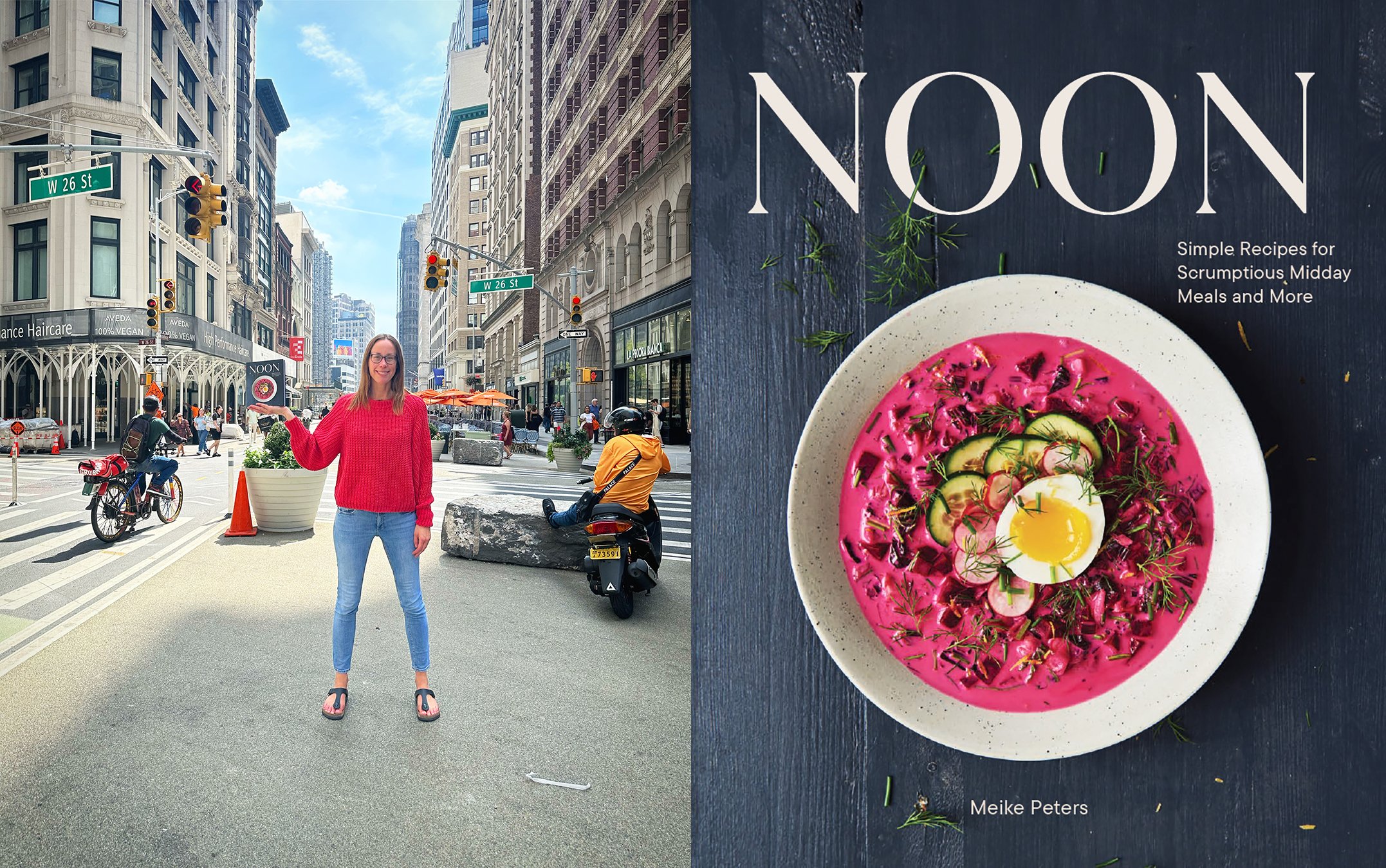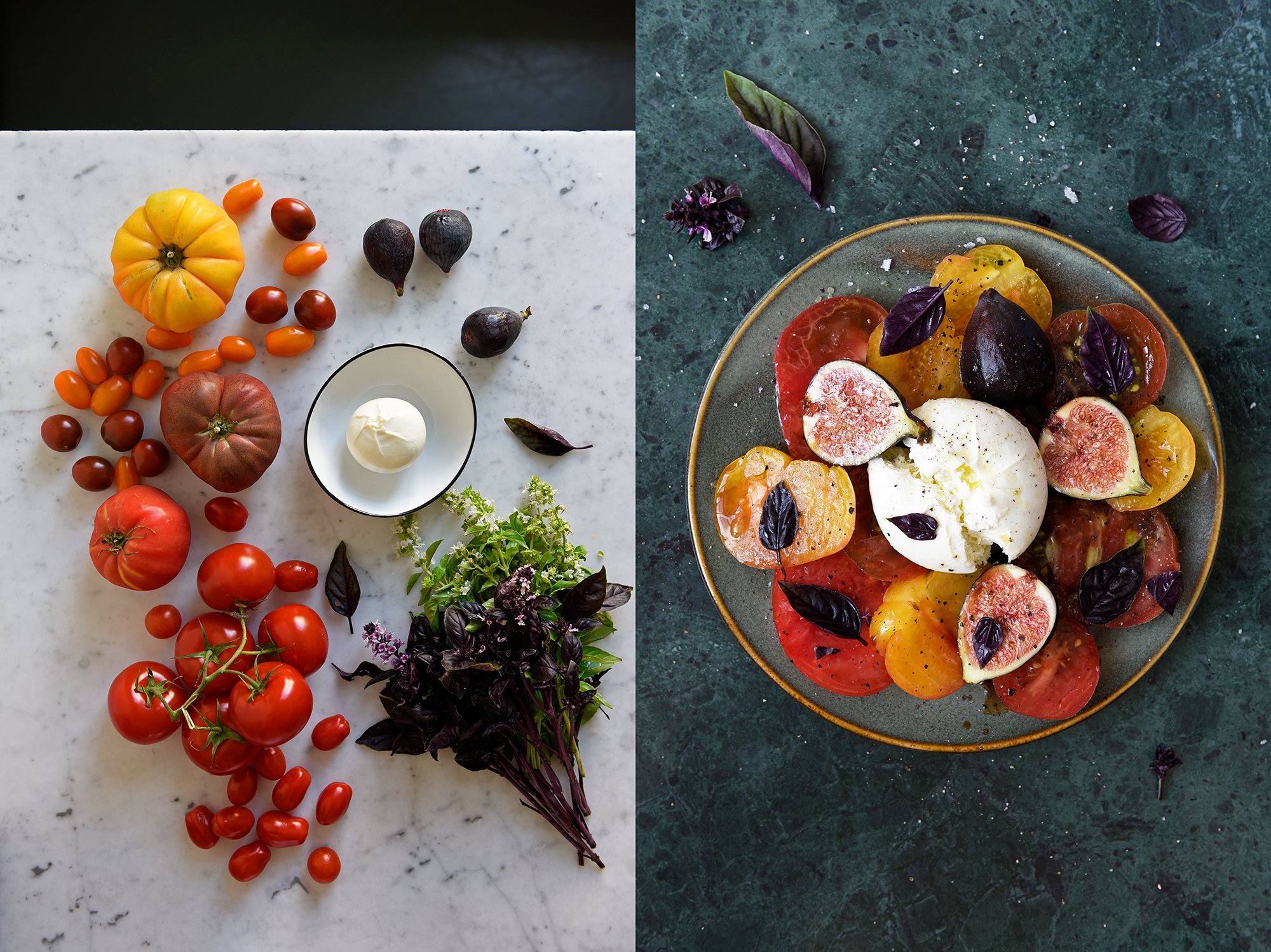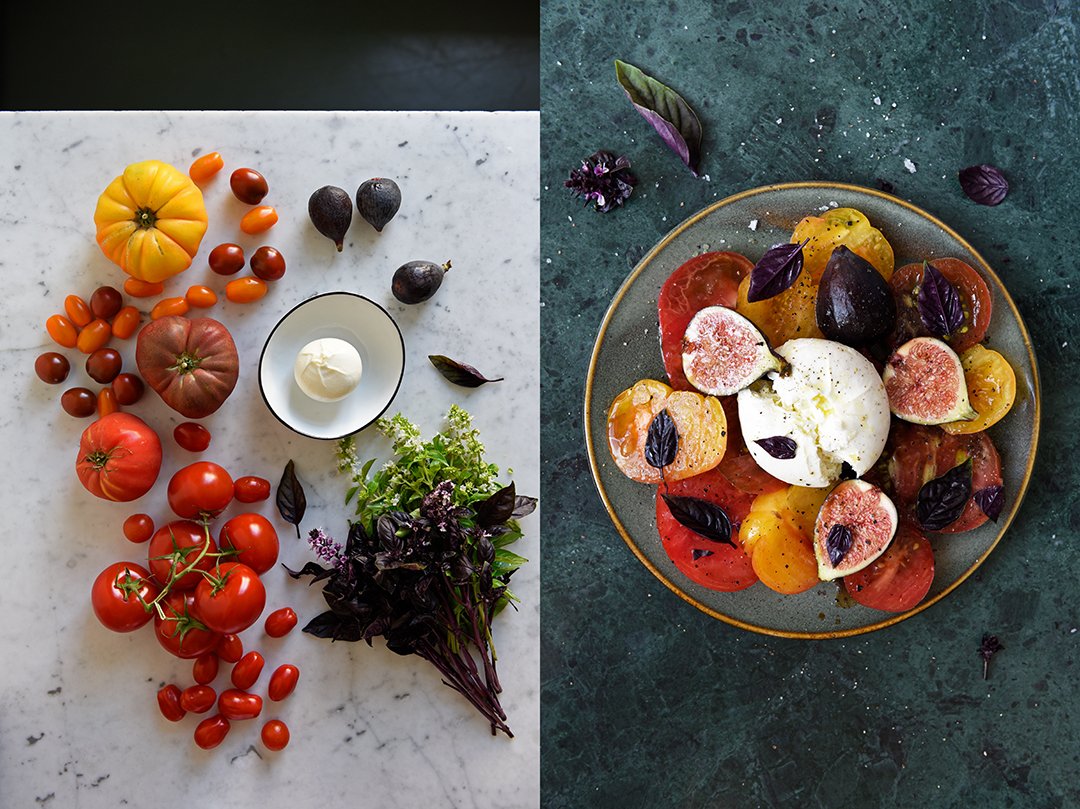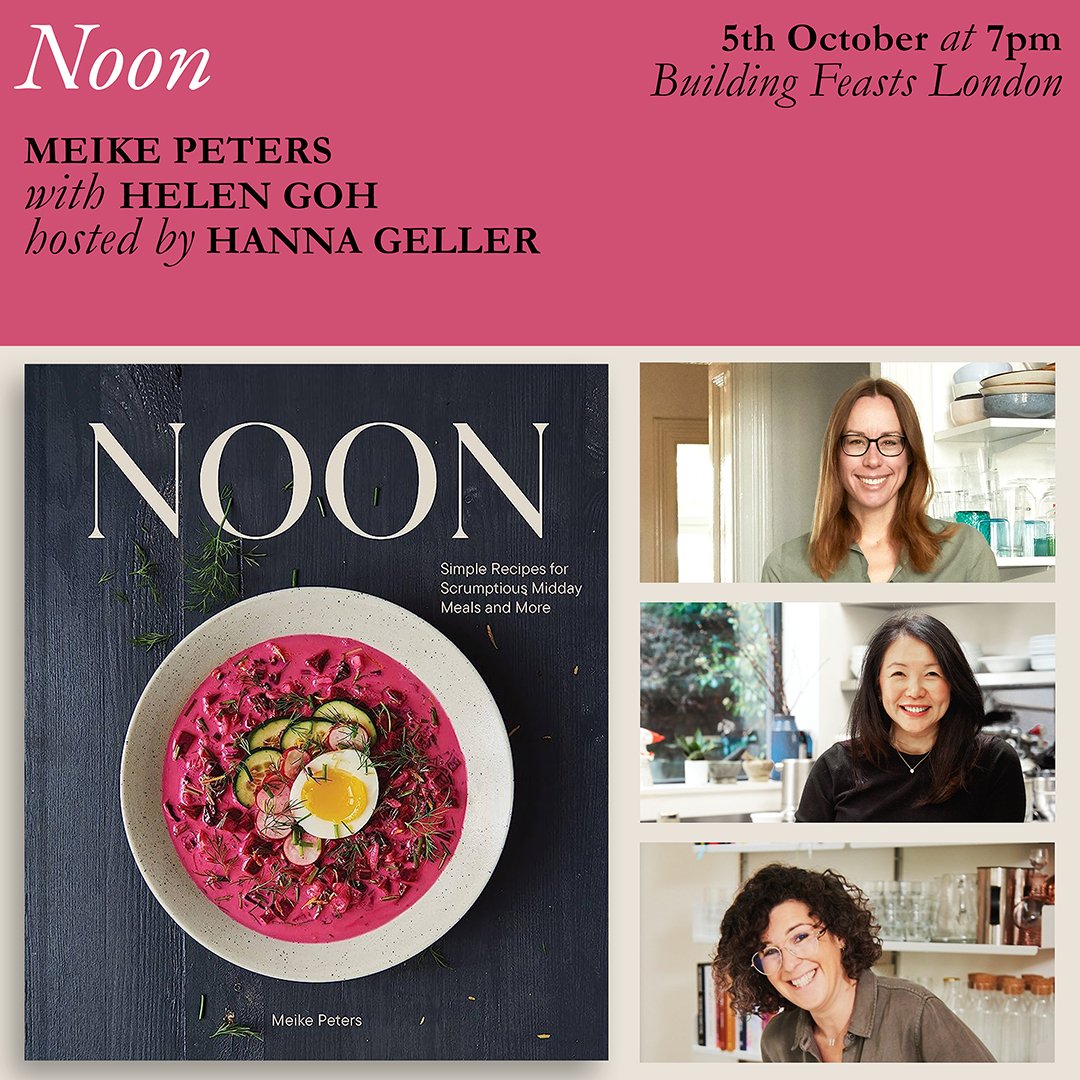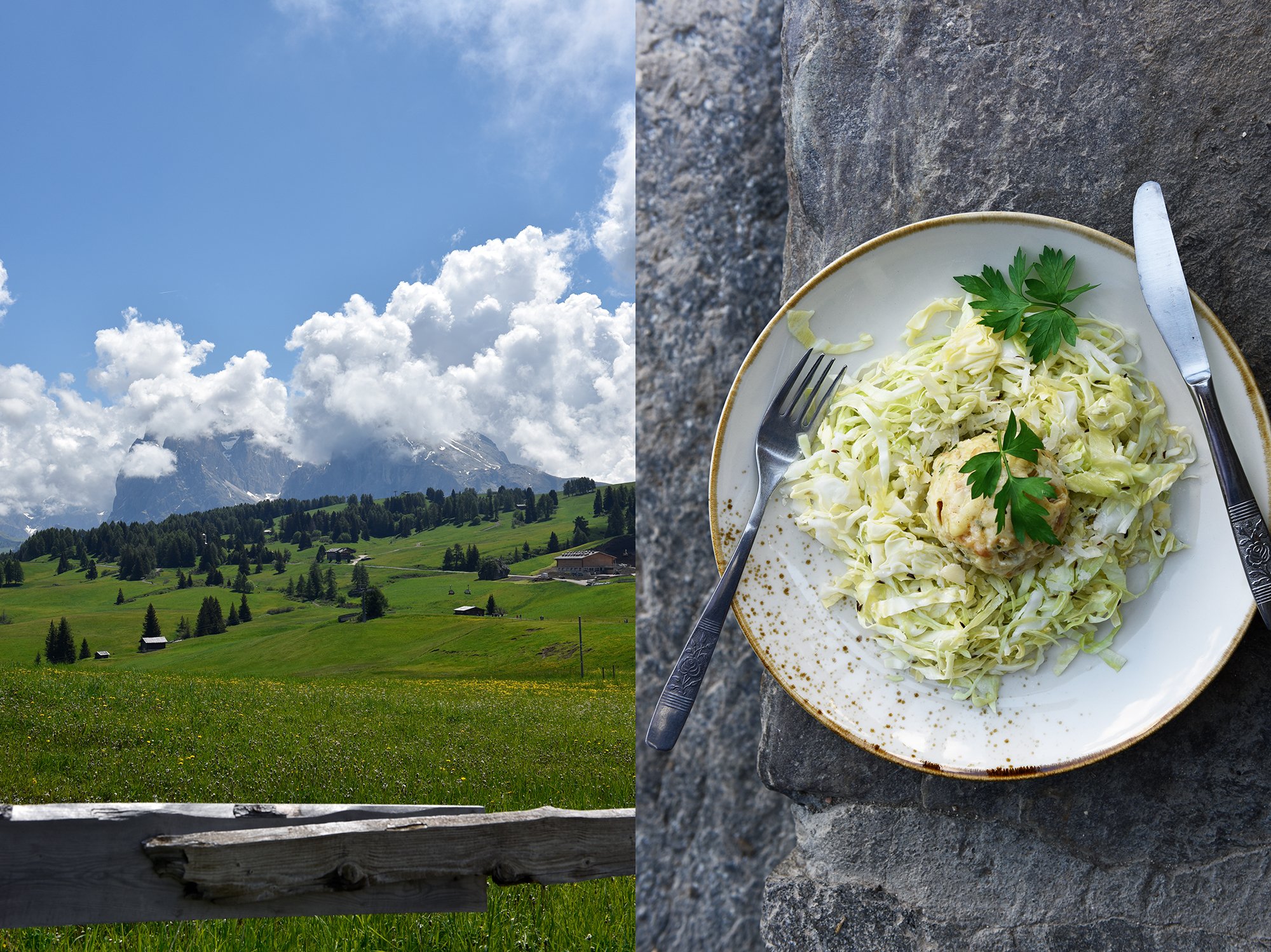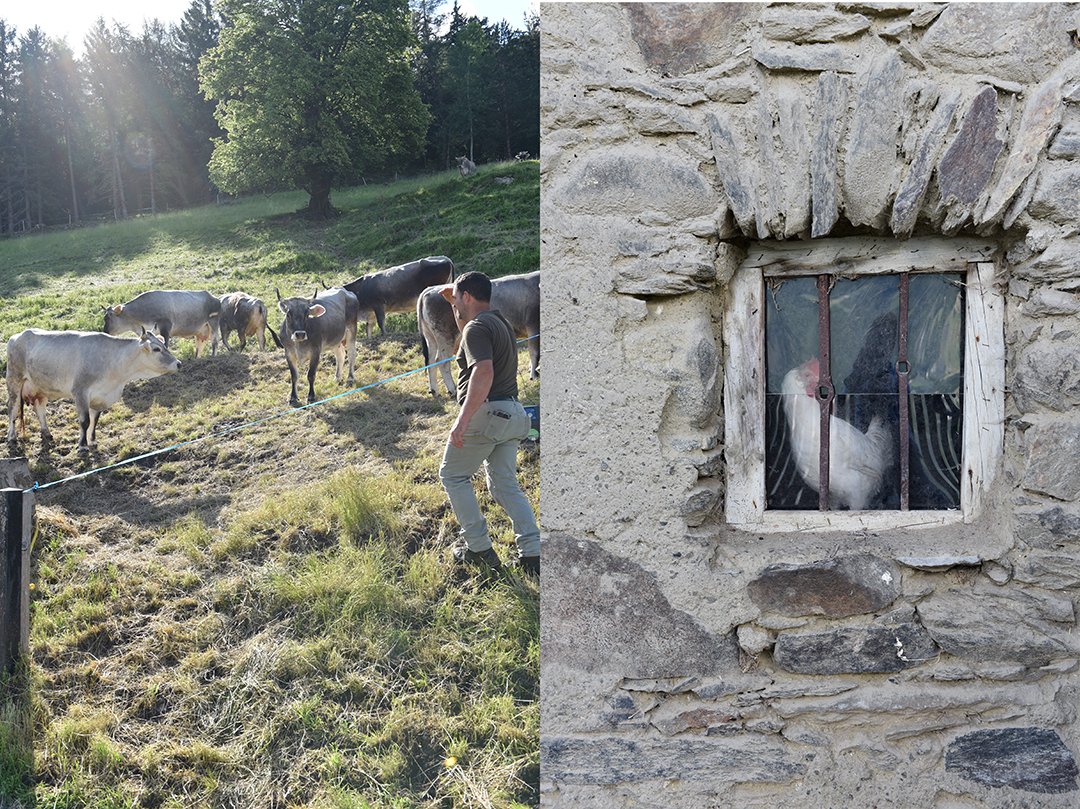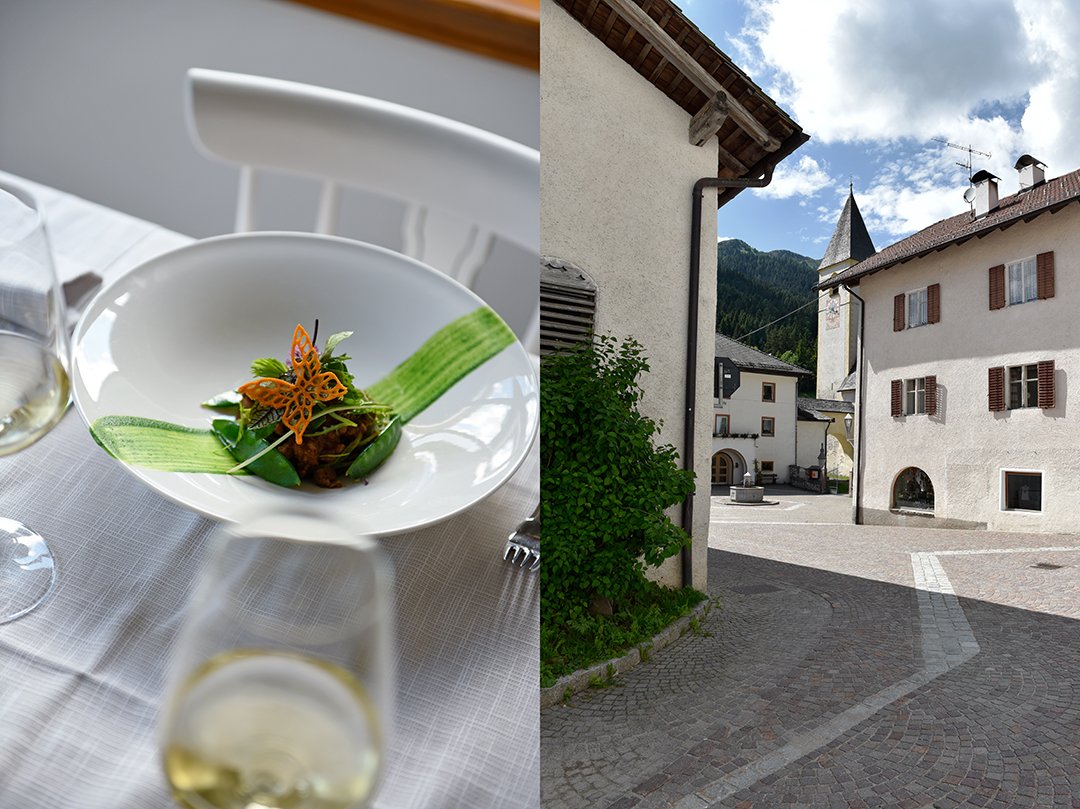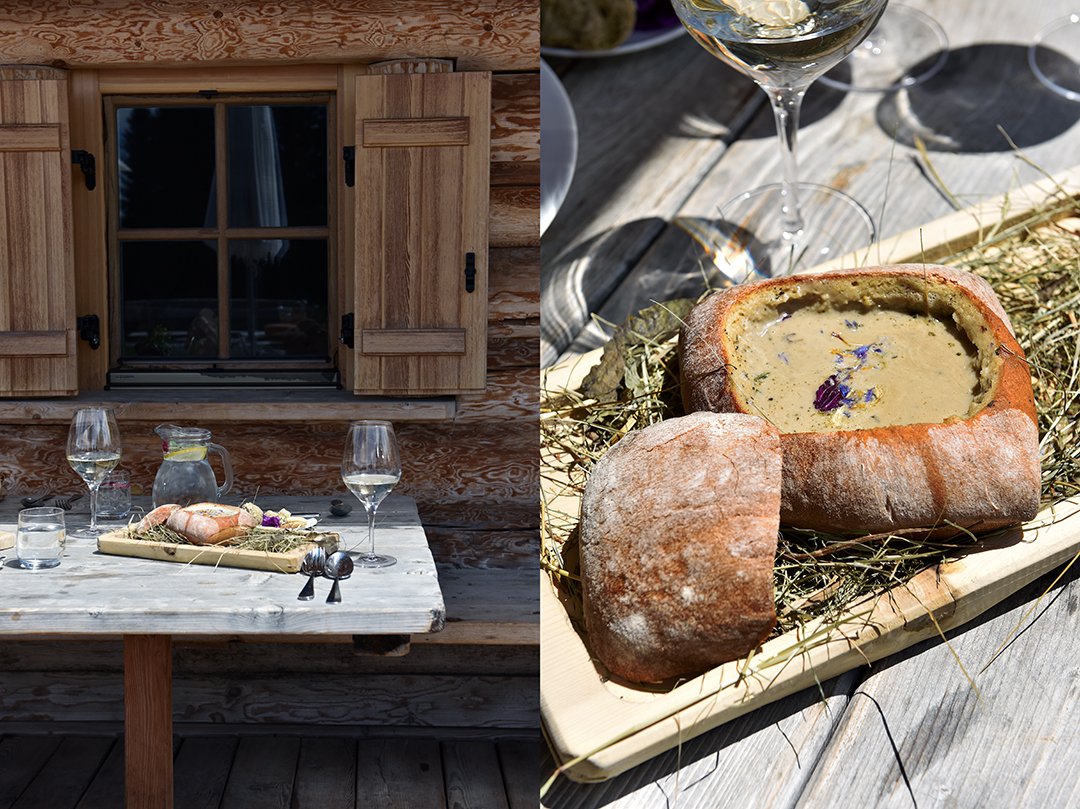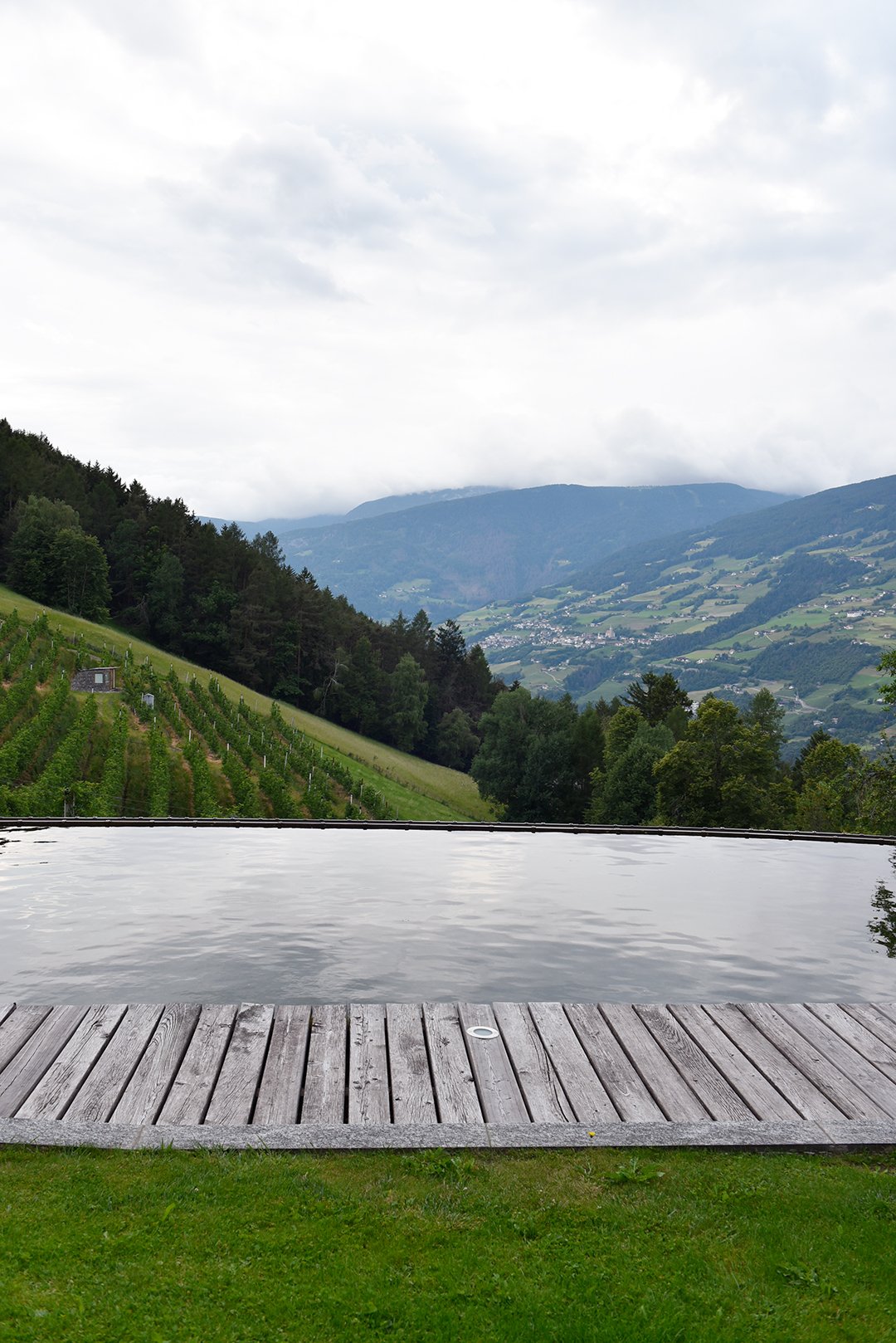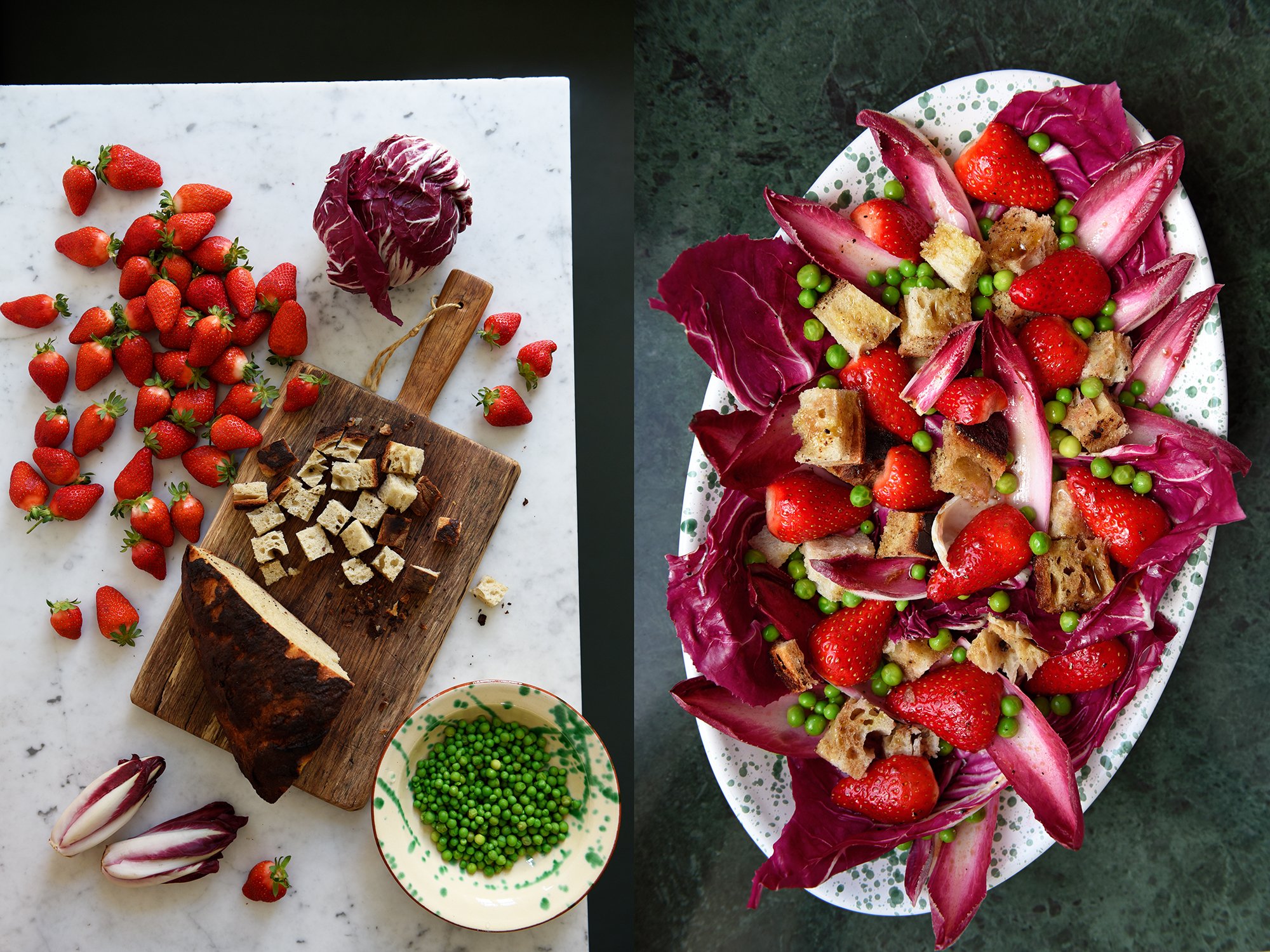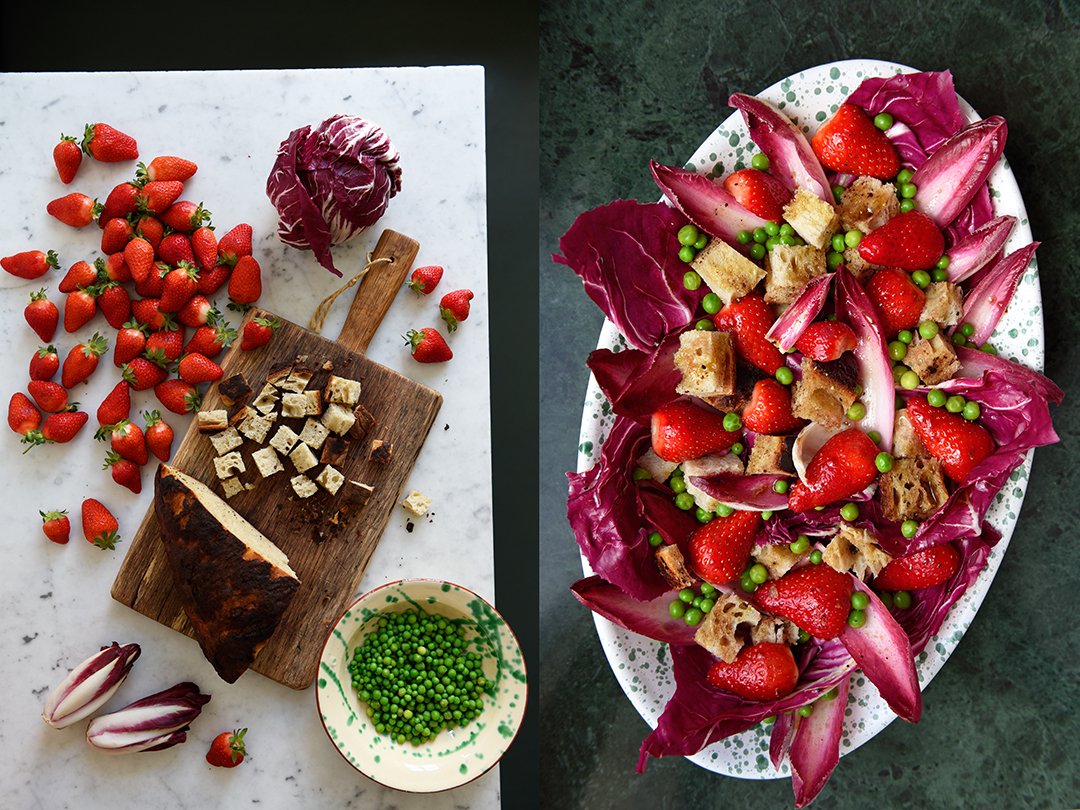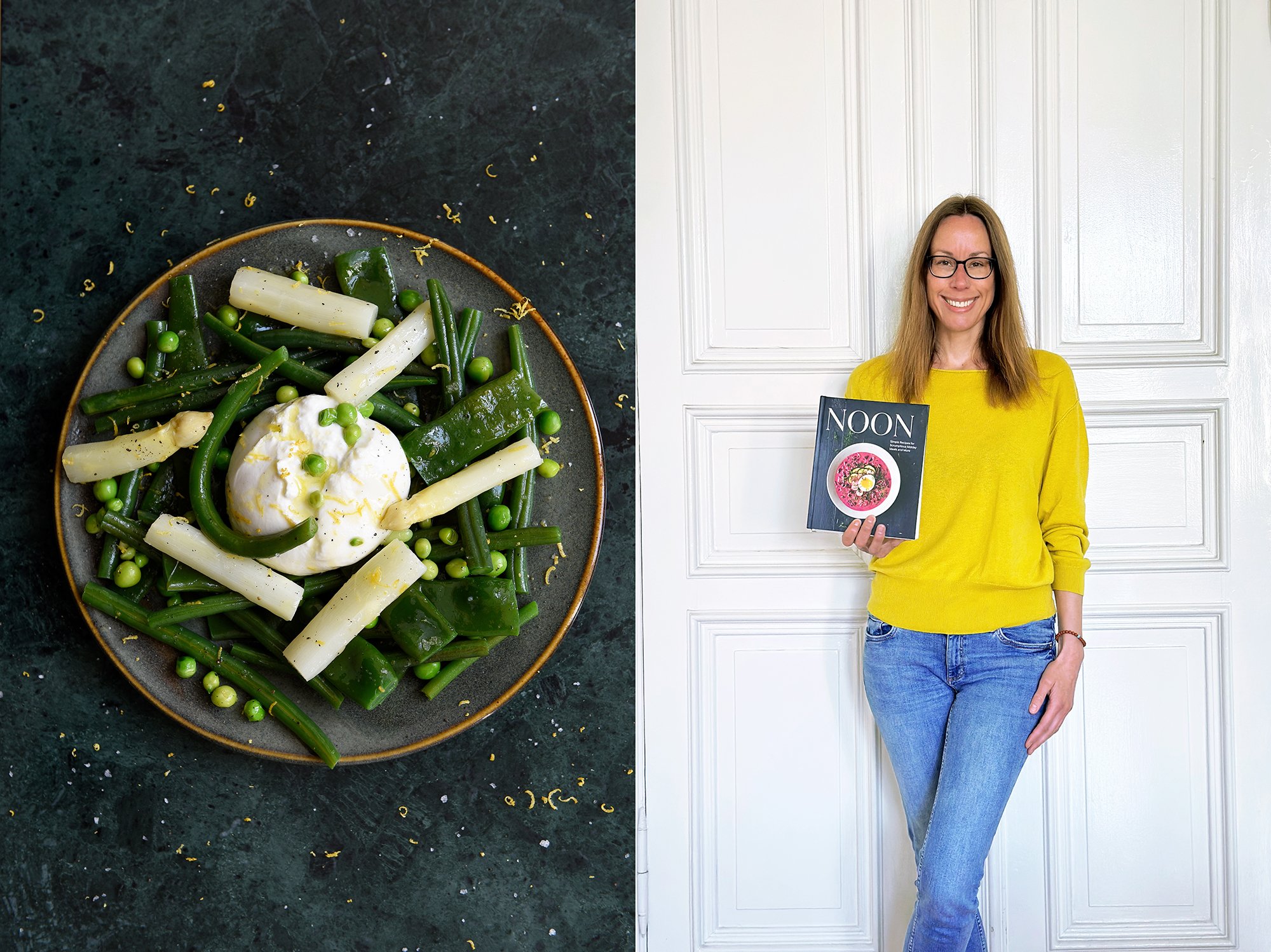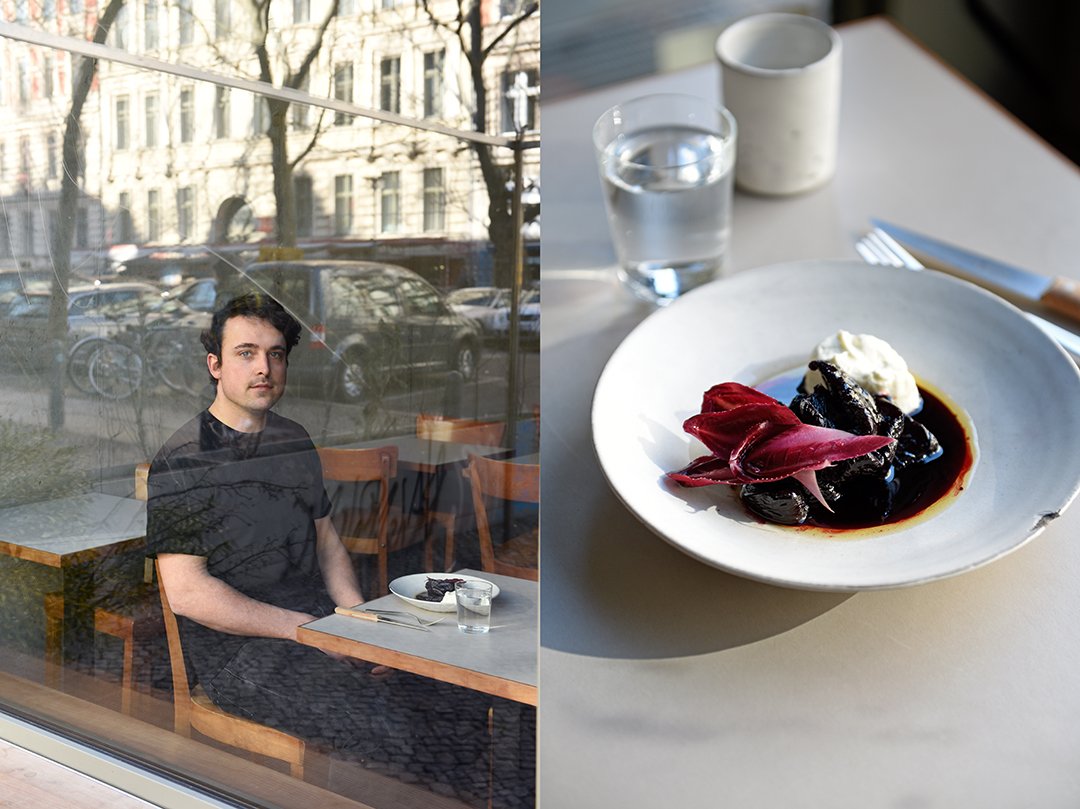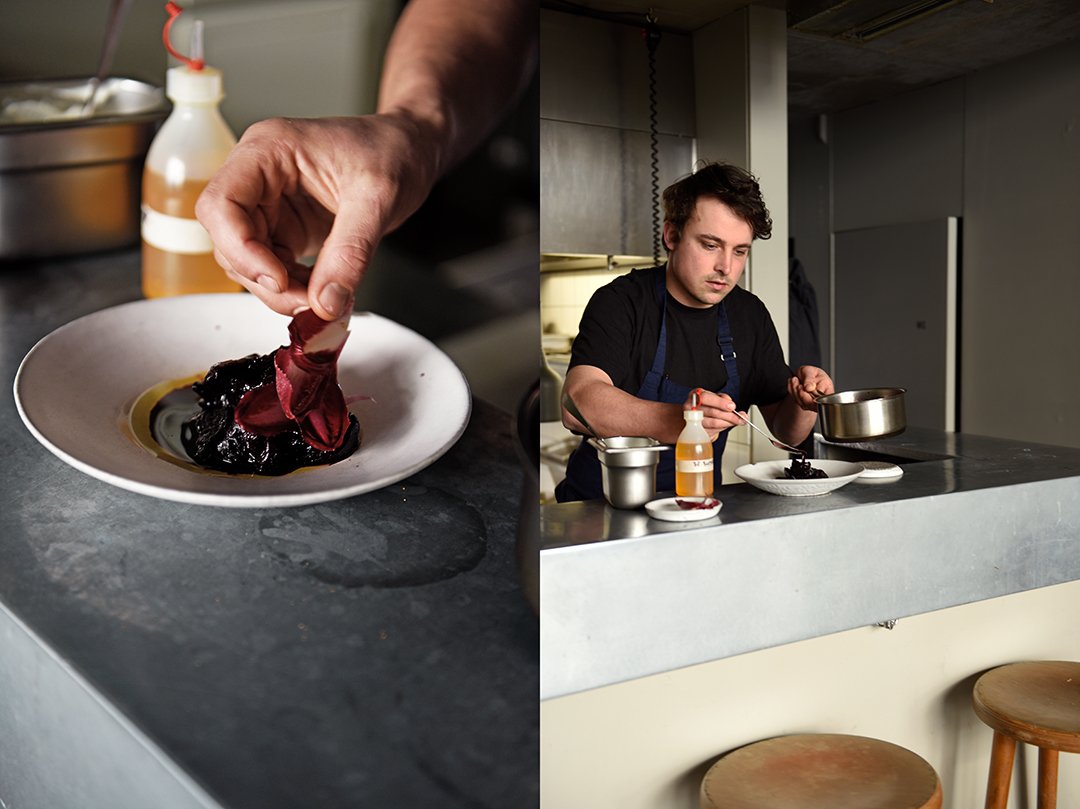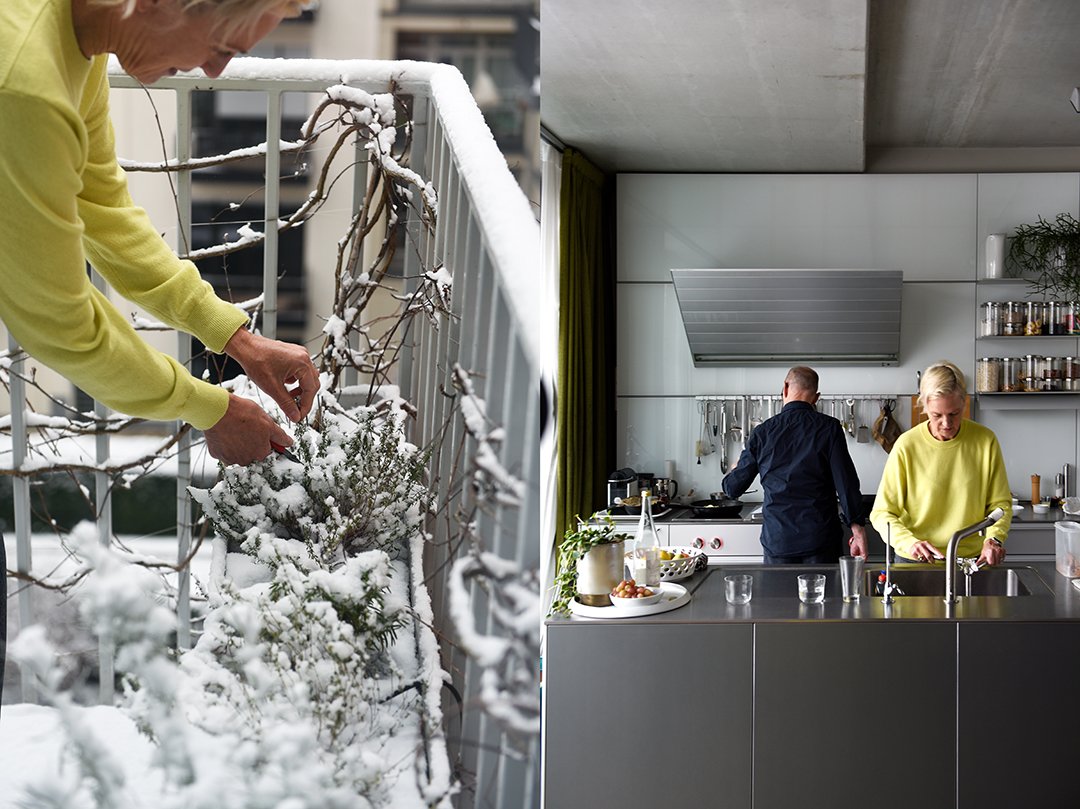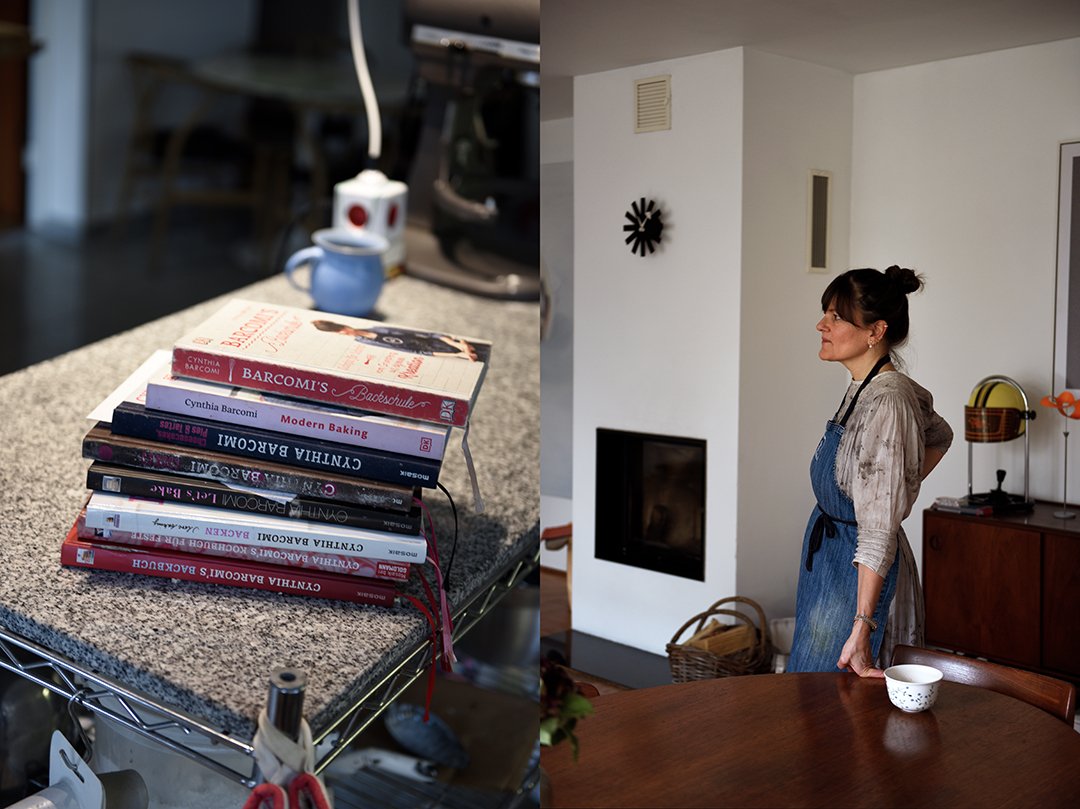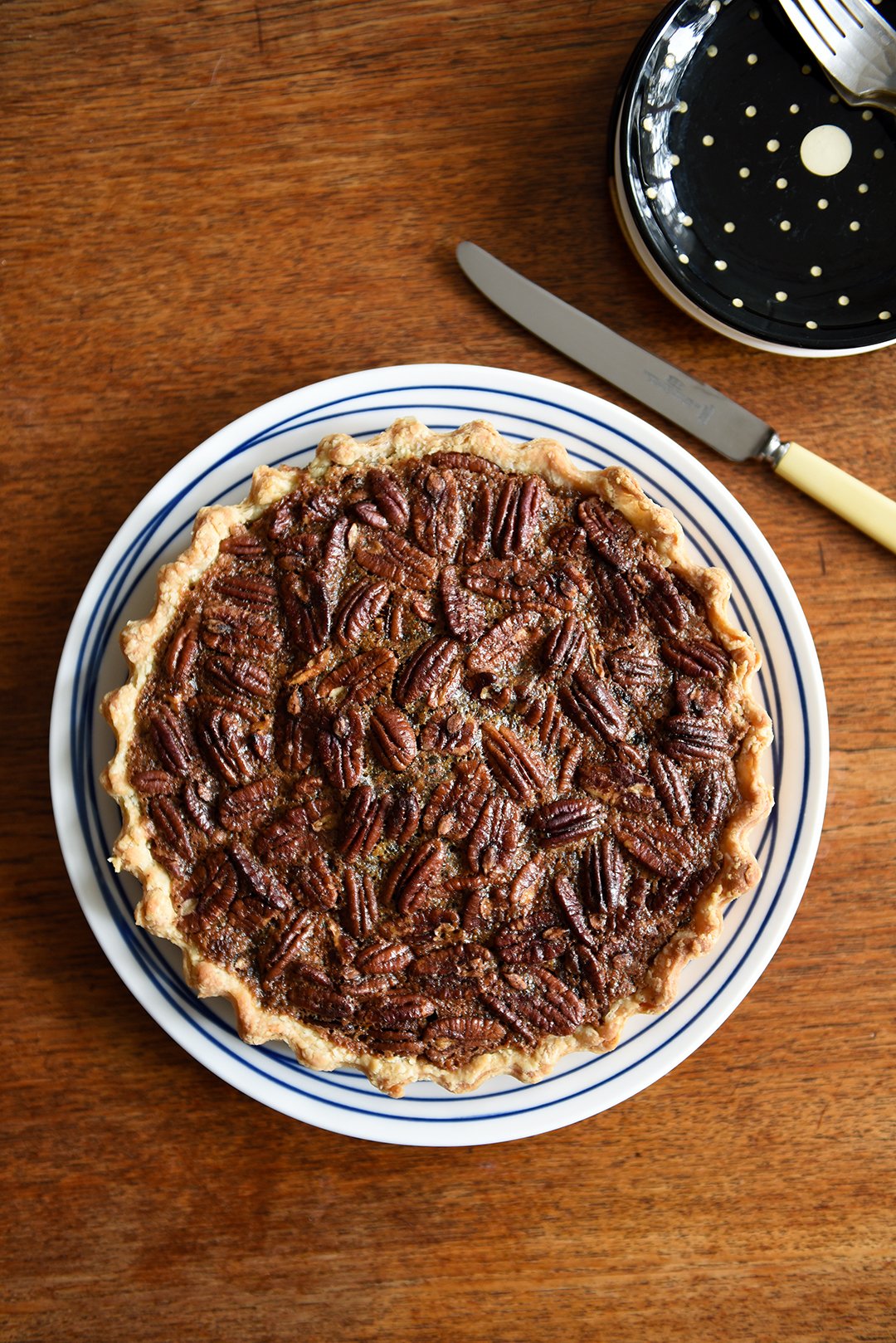LONDON
Food creates that safe, innocent space where we can meet without being a threat to each other; where we can be ourselves, embrace the fact that we are all unique through our unique stories, but when we exchange our stories - and the food connected to them - our paths converge and our lives intertwine.
To be able to share our stories, we must let go of our defenses, of our fear to be judged, condemned, or misunderstood by the ones who listen. We must accept our own vulnerability. The ground will feel wobbly, uncertain at times, but once we share our true story - and fully identify with that story - we transform; we get closer to our self and become stronger. When understanding is mutual, heartfelt on both sides, when we allow compassion, we have a real chance for change.
London was the last stop of my NOON book tour and the audience, our guests, made it easy for me to let go of my own defenses. It was an intimate evening at Hanna Geller’s (Building Feasts) beautiful, calm home. Helen Goh and I were in conversation and Hanna gently guided us through our lives, our books, our cooking and baking, and she made us feel safe to talk just as much about our confidence as about our insecurities. Sitting together with our guests in a circle, sharing food and champagne, and sharing our stories and thoughts about our lives and careers, but also sharing our vulnerability, brought all of us closer together.
Hanna opened more than just the doors to her home for the NOON book launch, without her help, trust, support, and friendship the evening wouldn’t have been possible. She prepared the food while I was running around London stock signing copies of my book, she bought champagne glasses when I noticed that I had forgotten to hire them. And the night before the event, I had the most peaceful dinner with her and three of her four boys. Sitting at her kitchen counter, a bowl of steaming soup in front of me, a dripping cheese sandwich in my hand, everyone chatting and laughing, made me feel so good, so calm, and ready for the London book launch.
And then, last Thursday night, we filled our glasses with Lallier Champagne’s glorious Grand Rosé Brut. Just like in Berlin, everyone fell in love with its fine fruity taste and delicate bubbles. Thanks to Aileen of Lallier UK, we even got a brief but very entertaining introduction to the champagne’s history and flavor profile. I can always enjoy a glass of champagne, any time, but it fit particularly well to the snacks from NOON that we - or rather Hanna - prepared and served to our guests: Peach Tart with Stilton (this is also the recipe that I’m sharing with you today, see below), Roasted Squash, Parsnip, and Grape Salad with Blue Cheese (click here for the recipe), and the Sauerkraut and Hummus on Sourdough Bread that already won the hearts of many NOON readers all over the world (here’s the recipe).
While I was in London, I got the chance to meet some book sellers at their independent bookstores to sign copies of NOON. There’s something magical about these places, the smell of books, the eyes of the customers concentrated and focussed while leafing through the pages of a book that, in that moment, becomes a world on its own. There’s a certain peace in these stores that soothes the mind and gives it some rest. That’s the magical power of a book.
Here’s a list of the London bookstores where you can find signed copies of NOON:
Books for Cooks (no signed copies but co-owner Eric Treuillé tests and serves dishes from the cookbooks at his Notting Hill bookstore / restaurant)
When you only have a few days in a city - for pleasure or business, it doesn’t really matter - when you’re on your feet constantly, it’s heavenly to come back to a hotel that feels as comfy as home but still so special that it excites and makes you smile every time you enter the loungy lobby.
The Hoxton Holborn managed to help keep my mood and energy level high and happy. Right in the center, the hotel sitting snug between Soho and Farringdon, I often didn’t even use the tube and just walked. My room was so quiet and cozy that I could have stayed for weeks (there’s something about British interiors, especially in bedrooms and bathrooms, that makes me forget about my usually quite minimalist approach to design and consider changing my entire Berlin flat from white walls to extravagantly patterned wallpapers).
Unfortunately, my schedule was tight and I didn’t get to indulge as wildly into lunches and dinners as I would have loved to, but here are some of the spots that I enjoyed while running around the city:
Quo Vadis, Smoked Eel Sandwich with a glass of crisp white wine, sitting outside on the bench (recommended by inspiring Gurdeep Loyal, author of Mother Tongue)
St. John’s Marylebone, Eccles Cake with Lancashire Cheese
Borough Market, Dorset oysters at Shellseekers (they also had the biggest oyster I’ve ever seen, 10 years old, but in the end I went for the smaller 3-year-old ones; they tasted fantastic, a little sweeter than my beloved French Fines de Claire)
Bishops Finger pub, traditional Fish & Chips
Ottolenghi Spitalfields (a tradition, for lunch)
The official NOON book tour came to an end and I want to thank YOU for following my journey that led to this book, and for your support of my work, of my recipes, and of this book that means so much to me. It’s at the same time scary and beautiful to see a book leave my kitchen and enter yours. So enjoy NOON, now it’s yours!
And I want to thank everyone who made the NOON book tour possible, in New York, in Berlin, and now in London:
Our curious guests, Hanna Geller and her son William, Helen Goh, the 3 ladies of Lallier UK: Aileen Rolfe, Rebekah Crabb, and Harriet Chandler, Champagne Lallier and Johannes Rohmer, Ingrid Meyer-Lohrmann and IML Kommunikation, everyone at The Hoxton Holborn, Eva Kaiser PR, Gianni Diliberto, Chronicle Books, and everyone at the Abrams&Chronicle Books UK headquarters.
So much love! Meike xxx
The photos taken at the NOON book launch in London are by Gianni Diliberto. The other pictures are by me.
Peach Tart with Stilton and Thyme
NOON: Simple Recipes for Scrumptious Midday Meals & More, Chronicle Books:
Bake your peach tart in the evening and take it with you to work the next day. At noon, go outside and sit down in a park, and when you munch on the first mouthful, close your eyes. Buttery pastry, chunky peaches, Stilton, and thyme, all in one bite, taste like a summer holiday memory turned into food. The sweet, fruity juices and salty cheese can almost compete with a blissful day at the beach.
NOTE: you can also replace the peaches with pears.
Serves 3 to 4
FOR THE PASTRY
2 cups (260 g) all-purpose flour
1 teaspoon fine sea salt
½ cup plus 1 tablespoon (130 g) unsalted butter, cold
1 large egg
FOR THE TOPPING
3 large white doughnut peaches, cut in half lengthwise
2 large yellow peaches, cut into quarters
2½ tablespoons olive oil
3 ounces (85 g) Stilton or Roquefort, crumbled
15 fresh small thyme sprigs, plus 1 tablespoon thyme leaves
Flaky sea salt
Coarsely ground pepper
For the pastry, combine the flour and salt in the bowl of a stand mixer fitted with the paddle attachment. Add the butter and use a knife to cut it into the flour until there are just small pieces left. Quickly rub the butter into the flour with your fingers until combined. Add the egg and mix on low just until the dough comes together. Form the dough into a thick disc, wrap it in plastic wrap, and freeze for 10 minutes.
Preheat the oven to 400°F (200°C).
On a work surface, place the dough between 2 sheets of plastic wrap and use a rolling pin to roll out into a disc, large enough to line the bottom and sides of a 10 to 12-inch (25.5 to 30 cm) quiche dish; a smaller quiche dish makes a thicker pastry base, which is nice for the peaches. Fit the dough into the quiche dish, pushing it into the dish, especially along the edges. Use a fork to prick the dough all over. Bake for about 15 minutes or until golden. If the dough bubbles up, push it down with a fork.
For the topping, arrange the peaches in circles on top of the prebaked pastry; for the middle of the tart, cut 2 yellow peach quarters in half again and arrange in a small circle. Drizzle with the olive oil, then sprinkle with the Stilton, thyme sprigs, and a little flaky sea salt. Bake for about 23 minutes or until the pastry is golden and crispy and the cheese is melted. Take the tart out of the oven, then immediately sprinkle with the thyme leaves and a little pepper. Let the tart cool for at least 15 minutes. Enjoy warm or cold.
BERLIN
Berlin was a party! We celebrated the German NOON at the stunning Hotel de Rome, with (lots of) champagne, with friends who came all the way from Lisbon, France, and Vienna, and with many good conversations. And we even sang at the end.
Celebrating a new book in my home city, Berlin, makes me feel both calm and very excited at the same time. I’m surrounded by my people, by my beloved city; and launching a book for the third time at Hotel de Rome, makes it feel even more like home.
So many kept offering me help, there was so much love and support that, although the launch was rather wild, it didn’t feel overwhelming for a second. Our event was set for two hours - we extended it slightly - but not even ten hours would have been enough to fit in all the conversations that I would have loved to have. About 80 guests (I lost track), the champagne kept pouring, the snacks from NOON were relished with sounds of pleasure (so much praise for the Hummus and Sauerkraut on Sourdough Bread from the book! Click here for the recipe), we didn’t even need any background music as the chatting and laughing filled the hotel’s Opera Court, a grand room in the former bank’s building (you can read more about the hotel’s history here).
Restaurateur Billy Wagner of Nobelhart & Schmutzig, no. 45 of the World’s 50 Best Restaurants, thankfully agreed to do the talk with me at our event. About two years ago, we had done a Meet in Your Kitchen feature and a podcast episode together. A few months ago, I bumped into him at an exhibition. After I had left, I was already on my bike on my way home, I thought “Billy, he’s the one for the Berlin NOON talk!.” So I quickly cycled back, asked him, still out of breath, if he’d be up for it and, luckily, he was.
When he asked me his questions in his calm Billy-way - some even unexpected, which I like - I stayed relaxed and inspired throughout the entire conversation. I think our exchange about food, noon, cookbooks, rituals, and recipes was as much fun for me as it was for our guests. Billy kept the string tight, without letting it tear - that’s a great gift to guide through a conversation.
To organize an event this big, you need partners, a team who you can trust and who trusts you too. The Hotel de Rome is not only one of Berlin’s most beautiful five-star hotels - and has the city’s most stunning roof terrace - it also has the best staff. Türkan Arikan, Director of Communications, has been a great supporter of my work since 2015 when we first met. It almost felt like love at first sight and even three books later, it hasn’t lost any of its magic.
I met Ingrid Meyer-Lohrmann, a natural networker with the biggest heart and passion for connecting people, around the same time as Türkan. Ingrid was the one who introduced me to Hotel de Rome eight years ago, and now, she brought Lallier Champagne into my life, whose delicious pink bubbles definitely lifted the crowd’s mood. Matthias Runge, the hotel’s Executive Chef, has been a fan of my recipes for years, we often chat about flavor combinations, so seeing him prepare the dishes for our event, made me feel very safe.
Today, I’m sharing one of the recipes from NOON that we also chose for the launch and that helps to slowly slip into the groove for autumn: Roasted Squash, Parsnip, and Grape Salad with Blue Cheese (recipe below).
The Berlin launch felt like a party - and I loved that. I’m quite happy that I don’t have to host a big event every week, however, when I think about it, the same rules that count for events also count for private gatherings. To be a good host, you need to feel good. You can only spread good vibes, when you feel them inside yourself. And to feel good, you need to surround yourself with the right people, you need to choose recipes that fit the occasion and to your schedule, and then it’s so much easier to stay relaxed and confident all night.
In the end, never forget, it’s your party. So accept imperfection and believe the ones around you when they offer you help. I’ve never accepted my imperfections more than I do now, I’ve never asked for help in such an honest way like I do now, I’ve never been so accepting with my own flaws. And I’ve never been so happy.
The next stops of my NOON book tour will be London on October 5th:
You can join me in conversation with Helen Goh, hosted by Hanna Geller at Building Feasts in a beautiful (secret) location (we will send you the address when you buy the ticket), with Lallier Champagne and snacks from NOON!
GET YOUR TICKET HERE and we’ll see you in London!
I want to thank everyone who made the Berlin launch of NOON possible - and so glamorous and glorious! Our guests, I loved seeing and hearing your laughters, seeing you dive deep into conversations, enjoying yourself and this night. There were just good vibes, thank you for that!
Thank you, you amazing people around me:
Türkan Arikan, General Manager Ulrich Schwer, Matthias Runge, and the entire team at Hotel de Rome, Billy Wagner, Ingrid Meyer-Lohrmann and everyone at IML Kommunikation, Champagne Lallier and Johannes Rohmer, Pia Werner and the best team at Prestel Verlag, Marcel Schwickerath, Tobias, Sira, Marta Greber for coming all the way from Lisbon (I’ll never forget that!), the four women / girl who inspired me to write NOON (Anne, her 4-year-old daughter, Gabi, and Laurel), all our guests - and Pat Appleton for singing for us before the lights went off!
Lots of love, Meike xxx
The photos taken at Hotel de Rome are by Marcel Schwickerath. The salad picture is by me.
Roasted Squash, Parsnip, and Grape Salad with Blue Cheese
from NOON: Einfache Mittagsgerichte für jeden Tag, Prestel Verlag (German)
NOON: Simple Recipes for Scrumptious Midday Meals & More, Chronicle Books (English)
Serves 2
FOR THE SALAD
12 ounces (340 g) seeded squash, preferably peeled butternut or Hokkaido with skin, cut into 1-inch (2.5 cm) wedges
6 ounces (170 g) seedless red grapes, on the vine
3 ounces (85 g) peeled parsnip, cut into wedges
¼ cup (60 ml) olive oil
Flaky sea salt
6 large radicchio leaves, torn into large pieces
8 small romaine lettuce leaves
1½ ounces (40 g) Roquefort or Stilton, crumbled (optional)
FOR THE DRESSING
3 tablespoons olive oil
2 tablespoons white balsamic vinegar
Fine sea salt
Finely ground pepper
Preheat the oven to 400°F (200°C).
For the salad, spread the squash, grapes, and parsnip on a large baking sheet, but keep them separate. Drizzle with the olive oil and gently toss to coat, again keeping the squash, grapes, and parsnip separate. Season with a little flaky sea salt and roast for 15 minutes, then gently flip the squash and parsnip over and continue roasting for 10 to 15 minutes or until the squash and parsnip are tender and the grapes start to soften. Remove from the oven and let everything cool on the baking sheet for 5 minutes.
For the dressing, whisk together the olive oil and vinegar in a small bowl and season to taste with fine sea salt and pepper.
Divide the radicchio and lettuce leaves between two large plates and layer the squash, parsnip, and grapes (on the vine or snipped) on top. Sprinkle with the Roquefort, drizzle with the dressing, and serve immediately.
To prepare the salad for transportation, let the squash, parsnip, and grapes (off the vine) cool completely, then pack in a container and spread the radicchio, lettuce leaves, and Roquefort on top. Keep the dressing separate in a jar and assemble just before lunch.
To 35 years of friendship, through thick and thin, thank you, Tobias:
NEW YORK
New York, you beautiful, crazy, challenging, magical city, you were good to me - and to NOON!
Being in New York, never feels normal! The city is vibrating, your body and mind are vibrating, and everything and everyone around you is moving, constantly. It feels like being on the edge of a cliff, where you can see more beauty, more life, where you can feel more alive, than in any safer spot. A week is packed with enough adventures and inspiration to fill a whole year. When you leave New York, you’re filled up with life, but at the same time, you feel like you need to sleep for days to return to your normal rhythm.
I’ve now returned to Berlin, the ground underneath my feed still a bit wobbly, my mind still a little overwhelmed, but what a trip! The launch of NOON in New York City, celebrated with a conversation with Hetty Lui McKinnon at Rizzoli Bookstore on Broadway, was the first stop of my book tour. I was nervous before I went on stage, it had been four years since I last spoke about my book (365 in 2019). I wasn’t sure if I had gotten rusty, if I’d feel shy about this book that is very personal and means so much to me. NOON was born at a difficult time in my life, a time of loss and change. And although this is not what this book is about, would I be able to talk about it? As this is what made me re-discover this time of the day.
There was no reason to worry, Hetty - and everyone else who came to Rizzoli to listen and celebrate with us - made me feel safe and comfortable. And the response I received was proof that we can share our struggles, how they challenge us and make us grow, how they can even inspire us. And by doing so, by sharing this very personal yet at the same time universal experience that we all face at some points in our lives, we can spread a feeling of encouragement, a feeling of trust in regaining safety and comfort. The path of getting there is never easy, but the people around us, our friends, but also strangers, and also our cooking and food, can make it so much easier.
Through noon - and through NOON - I found new rituals and recipes, and discovered a form of empowerment that goes beyond just enjoying - and sharing - recipes. Noon and NOON taught me to take better care of myself, to allow myself to focus on my own needs, at least once a day. Midday, when I sit down for lunch. Sharing this experience echos and resonates with the sentiment of so many people who I’ve met and talked to. Sharing recipes that can help make it easier to find a new rhythm, a rhythm which allows a healthier form of self care, is a truly beautiful and powerful side of this book, which I only really discovered now since the book is out.
Changing your routine can have such a powerful impact. And maybe, in the end, it doesn’t matter if this change happened by choice or was forced upon us, in the end, it’s just about our decision, what we choose to do with that change. It’s quite a stunning realization that our transformation and the direction it will take are still, despite all outer odds and struggles, in our own hands.
While I was in New York, I also got to sign copies of the book, which are now available at these bookstores in Manhattan and Brooklyn:
Kinokuniya, 6th Avenue
Barnes & Noble, Union Square
The next stops of my NOON book tour will be Berlin (by invitation only, as it would become too big an event otherwise) and London on October 5th:
You can join me in conversation with Helen Goh about women in food, hosted by Hanna Geller at Building Feasts in a beautiful (secret) location (you will get the address when you buy the ticket - feels like clubbing in the 90s…), with Lallier Champagne and snacks from NOON! GET YOUR TICKET HERE and I’ll see you in London!
Today, I’m sharing a recipe with you from NOON, which couldn’t fit any better to New York. It’s a sandwich, nourishing and simple, yet at the same time just as much fun as New York is: Take a thick slice of (sourdough) bread, generously spread hummus on top, and finish it off with a pile of squeezed (uncooked) sauerkraut. To save time, you can use store-bought hummus, but I find it tastes so much better with my homemade spiced hummus from the book (recipe below).
Before I’ll let you indulge in your sandwich, I’m sharing some of the places with you that I enjoyed this time in New York, while running around, signing books, meeting people, and being mesmerized by this magical city:
Fabrique Bakery (cardamom bun)
Getrude’s Brooklyn (burger & fries)
SEY Coffee Brooklyn
Radio Bakery (basically everything)
Jack’s Wife Freda (Noam’s Malva Pudding)
Da Andrea (homemade pasta, get a table outside!)
Finn’s Bagels
Roberta’s Brooklyn (pizza)
ilili (for our post-book launch dinner with friends)
I want to thank Hetty, for being an amazing, supportive friend and interview partner. If you don’t have her latest book yet, TENDERHEART, go grab a copy! And Holly La Due, my editor since book no.1, and friend since we first met, thank you for shaping NOON together with me, and for always making me feel home in New York. Thank you for your support, Lauren Salkeld, John, Michael, Kavita, Eric, Sara, Odette, Lukas, Laura, Judy, Rona, and everyone else who came to celebrate with us!
The pictures of the book launch at Rizzoli bookstore were taken by my friend Daniela who came all the way from Costa Rica just to celebrate NOON - and us. We’ve been friends for 30 years, we studied architecture together, and we met the last time 10 years ago, in Berlin. During our university years, we used to enjoy long nights with lots of good food and wine; not knowing where life would take us; not knowing that one day, thanks to a cookbook, we’d sit together at a restaurant in Chelsea, chatting for hours, embracing New York, our lives, and our friendship.
So, I’m picking up on the dedication I wrote in NOON: To friendship!
Sauerkraut and Hummus on Sourdough Bread
from NOON: Simple Recipes for Scrumptious Midday Meals & More, Chronicle Books
You can use leftover hummus for other recipes, such as Roasted Eggplant and Hummus on Dark Bread with an Herb-Fried Egg (which you can also find in NOON).
Makes 1 large sandwich
FOR THE HUMMUS
1¼ cups (250 g) drained and rinsed canned chickpeas
2⁄3 cup (150 g) light tahini
1⁄3 cup (75 ml) water
¼ cup (60 ml) freshly squeezed lemon juice
1 large clove garlic, crushed
2 whole cloves, finely crushed with a mortar and pestle
¾ teaspoon ground cinnamon
½ teaspoon fine sea salt
¼ teaspoon ground cumin
FOR THE SANDWICH
1 large slice thickly cut spelt or rye bread, ideally sourdough
2 to 3 tablespoons drained jarred or canned sauerkraut
For the hummus, purée the chickpeas, tahini, water, lemon juice, garlic, cloves, cinnamon, salt, and cumin in a food processor or blender until smooth. Season to taste with additional salt and transfer to a small bowl.
For the sandwich, generously spread 2 to 3 tablespoons of the hummus on the bread, pile the sauerkraut on top, and enjoy!
NOON is OUT (and on Broadway)!
I just arrived in New York, happy and overwhelmed, on the publication day of this book that means so much to me.
Noon (and NOON) is a gift to yourself, shape that time of the day so that it fits to your own cravings. Make it yours! Use this 1 hour, or these 30 minutes, to make yourself feel good. We plan so much in our lives, every day, we just refuse to often do so when it comes to our own, our very personal needs. And we all need a break but we associate the creation of that break with even more work. So the solution is to find ways (recipes) to reduce that work and time for the preparation of our lunch so that we actually have more time for ourselves when we finally sit down; time to relax and enjoy. I hope NOON can offer you these recipes, but even more, I hope it offers you inspiration to make noon yours.
If you don’t have your copy yet, you can find all the links to order it online here, or support local and buy, or order the book from any bookstore all over world. The chapters in NOON cover Salads, Vegetables, Soups, Sandwiches, Pasta, Seafood, Meat, and Grains & Bakes - so your midday break will definitely be sorted!
Good noon! Meike xxx
The picture of me on Broadway was taken today - right after I had landed in New York - in front of Rizzoli Bookstore where I‘ll be in conversation with Hetty Lui McKinnon on Thursday, September 7th at 6pm - come join us! (For more information, click here)
If you won’t be in New York this week, but if you happen to be in London on October 5th, you can join my conversation with Helen Goh at Building Feasts, hosted by Hanna Geller, with Lallier Champagne and snacks from NOON! (For more information, click here)
Tomato and Fig Caprese & the NOON Book Tour
No other season inspires me as much as late summer. The mesmerizing abundance of vegetables and fruit in August and September never ceases to wake up my appetite and makes me want to experiment with it in my kitchen. Seeing the colorful fresh produce spread out at the stalls at the weekly farmers market in my neighborhood feels like a holiday for the eyes and the taste buds. Tomatoes in various shapes, colors, and sizes, yellow and green zucchini, bent and plump, apricots, peaches, and figs, and little berries that burst in your mouth when you pop their skins with your teeth. Red and black currants, gooseberries, and raspberries, pair them with a bunch of fresh herbs and a quick vinaigrette and you have an exciting salad ready for lunch in less than five minutes.
The classic caprese, loved and adored every summer all over the world, is kind of the mother of all simple salads. You just need juicy tomatoes, creamy burrata (or stracciatella), torn basil leaves, olive oil, balsamic vinegar, sea salt, and pepper. Replacing the usual mozzarella with burrata or stracciatella, using olive oil that’s so good that you want to lick it off your fingers, and my sea salt from Gozo, are game changers in a simple caprese. One of the most important kitchen rules is so true: the less ingredients you use, the more you have to focus on the quality of each single one of them.
A good caprese is built on ripe tomatoes, picked at their peak, and that’s the tricky part. Even in August, even the prettiest tomatoes from your trusted farmer at the market can sometimes disappoint. And if they taste bland, they won’t make your dish shine either. To avoid this, I’ve come up with various experimental caprese recipes over the years, moving away from tradition and using all sorts of fruits and roots throughout the seasons; summer’s bounty of peaches, berries, and plums, or beet, persimmon, and orange in winter.
Until now, I always refused to pair tomato with another fruit, the combinations never really satisfied me. So at first, I was hesitant when I spotted purple figs lying on my kitchen counter and considered adding them to a classic caprese. But: the result was fantastic! The figs add concentrated sweetness without distracting from the tomato’s own qualities. They just make them taste a bit sweeter, somehow, they make them taste like very ripe summer tomatoes.
It’s a kitchen hack, kind of, that I wish I had figured out before I wrote my new book, NOON. Now the book is printed so I guess I have to use this hack for the next one. But before I jump into new adventures again, I’m ready to fully enjoy seeing NOON enter the world. On September 5th (September 19th for the German book), NOON will be on the shelves of bookstores all over the world (and on sale online) - and I will go on a little NOON book tour: New York, Berlin, and London!
Before I’ll let you enjoy your tomato and fig caprese (recipe below), I’m sharing the tour dates with you and the wonderful people who I’ll be in conversations with - and a quote from an (early) starred review for NOON:
“Move over, breakfast: lunch is about to become the most important meal of the day.”
―Library Journal
If you don’t want to wait until September, you can pre-order NOON here, or support local and pre-order from your neighborhood bookstore.
NOON BOOK TOUR
NEW YORK
• September 7th, 2023, 6pm: at Rizzoli Bookstore, with Hetty Lui McKinnon, RSVP here (not required, but seating is limited and will be first come, first served)
BERLIN
• September 19th, 2023: in conversation with Billy Wagner of Nobelhart & Schmutzig (by invitation only)
LONDON
• October 5th, 2023, 7pm: at Building Feasts, with Helen Goh, hosted by Hanna Geller, ticketed event (to book a ticket, click here or email Hanna at info@buildingfeasts.com)
Thank you, Lallier Champagne, for sponsoring the NOON Book Tour!
Tomato and Fig Caprese
Serves 1
3 medium, very ripe tomatoes (preferably in various colors), sliced
2 figs, cut in half lengthwise
4 ounces / 110g burratta (or stracciatella or mozzarella di bufala)
olive oil
balsamic vinegar
flaky sea salt
ground pepper
a small handful of red or green basil leaves
Spread the tomatoes on a large plate and arrange the figs and burrata on top. Drizzle with a little olive oil and vinegar, season with a little salt and pepper, and sprinkle with basil. Enjoy immediataley!
Knoedel, Mountains and a Road Trip in South Tyrol
I went to South Tyrol for a little road trip, to sip on crisp mountain air and get lost in lush landscapes. The region’s faces change as quick as the weather, from serene soft hills to secluded villages and rugged mountain ranges. To me, no mountains are as majestic, as imposing as Northern Italy’s Dolomites. Their raw beauty makes you speechless. The French architect Le Corbusier called them “the most beautiful architectural artwork in the world.”
My expectations were high when I hopped off the plane and into my rental car. I know this region since my childhood days, this is where I used to spend my skiing holidays since I was nine years old, thanks to my stepfather who introduced my family to the picturesque village of Corvara. The food of the Dolomites, its monumental rock formations, the rustic architecture in the tiny mountain villages, all this left a deep love for this region and many marvelous memories inside me.
Although Corvara wasn’t marked on my travel map this time, I discovered new places, met so many inspiring people, and created new memories. My road trip started in Bolzano, South Tyrol’s capital, and I stayed at the newly renovated and utterly gorgeous Parkhotel Mondschein. The charming terracotta-colored Art Nouveau facade doesn’t show that the building’s oldest part dates back to 1320. The hotel is right in the medieval city center, set in a peaceful park with an almost Mediterranean vibe. The green oasis, dotted with palm trees, pretty umbrellas, and comfy sun loungers, was my first stop - for a welcome aperitivo - and my last one - for a luxurious breakfast. I could have stayed forever, chilling on the lounger, staring into the dramatic sky, and sipping on my elderflower cocktail.
So I was almost late for dinner, but Norbert Kier and his Enoteca Italia & Amore soon made me forget about my comfy lounger. It was just a short walk from my hotel, but it gave me the chance to enjoy the beauty of Bolzano’s historic center; chunky cobblestones and ice cream-colored buildings, and thunderstorm clouds that seemed ready to burst anytime - they didn’t, thankfully.
I set outside on the restaurant’s terrace, starting off with Battuta di Fassona (a beef tartare from the Fassona Piedmontese breed, which comes from Slow Food-certified Fassona cow farms), sandwiched with stracciatella di bufala, mustard, and pistachios. As I couldn’t decide which starter I should go for, Norbert also served me a Carpaccio di Fassona topped with summer truffle. Paccheri Pasta with Fish Ragù was placed in front of me next, simply divine, and so was the Quail with Swiss Chard and Lemon. I finished my lavish first dinner with Panna Cotta with Aniseed and Candied Cherries, which was so good and - as Norbert told me - it was made without gelatin, just with very rich, fatty heavy cream.
The restaurateur used to visit all Michelin 3-star restaurants around the globe every year. Norbert was always hungry for the new, for the next big thing, for the exciting. Now, he says, he’s not going anywhere anymore, now, he stays in Bolzano where he and his chef, Giuseppe Avitabile from the Amalfi Coast, want to show their guests what you can do with the region’s outstanding local produce. I’m hooked, I’ll come back.
My road trip began the next morning and reminded me that South Tyrol is so much more than breathtaking landscapes and an extraordinary cuisine. South Tyrol teaches you to listen to the silence, to breathe in, and just enjoy what nature reveals in front of you. And if you also listen to the people, to the Südtiroler (South Tyroleans), you can learn a lot about family and community, about bonds grown and tightened over generations; about traditions being lived, questioned, and sometimes readjusted.
In South Tyrol, you don’t just create for yourself, you create to preserve, or rather, you create to pass something on to the next generation. And maybe here lies the origin of the South Tyroleans’ focus on quality: they want to pass something on that has a value for the next generation. Maybe it’s pride, but also a sense of responsibility.
Right after breakfast, I left Bolzano to drive deeper into the mountains, to a farm in Partschins, close to Merano. The roots of the Oberbrunnhof date back to the 14th century. The rural farm has already been in the hands of farmer Manuel Laimer’s family for five generations. In 2004, Manuel’s grandmother passed Oberbrunnhof, its land and its traditions, on to her grandson and his wife, Caroline. Since then, the farm kept flourishing in the couple’s hands, and the family kept growing - three children guarantee that, potentially, the foundation for the next generation of farmers has been laid.
Both Caroline and Manuel stay very close to the traditions of this place; not because they have to, they do it out of free will and very passionately. Following the farm’s long breeding tradition, a herd of Tiroler Grauvieh (Tyrolean Grey), a typical Alpine cattle breed, enjoys the panoramic view from their meadows, while chickens run around them in respectful distance. Caroline affirmed that the Grauvieh is peaceful, as long as you follow farm rule no. 1: never approach a cow from its back, always from the front. The cattle is the farm’s pride, but the farm’s restaurant is what pulled me towards Oberbrunnhof.
Caroline is a home cook turned chef, she also serves and entertains her guests, treating them with traditional South Tyrolean dishes, such as Cheese Knoedel with Krautsalat (you can find her recipe at the end of this post), Brotsuppe (bread soup), Saures Rindfleisch (sour braised beef), speck and sausages from the farm, and her famous Apfelstrudel (apple strudel). The traditional spiced bread served along the dishes is baked by Manuel in a tiny room with an old wood-fired oven. The wall on one side of the room is covered with rustic wooden shelves where 200 fluffy pieces of dough, shaped into small ovals, sit and rise slowly. Once a week, Manuel starts the fire at 5am so that he can bake the little loafs at around noon.
The couple works constantly, from morning until night, there’s no holiday and no day off, but they don’t seem stressed. Life on the farm follows the family’s pace, not the other way around. It’s a lot of work, also hard physical work, but Caroline, Manuel, and their three children managed to create a very satisfying life for themselves. They don’t romanticize it, they just found their place.
You can visit the farm’s restaurant by reservation, but you can also stay for longer in their holiday cottage, Chalet Waldbrunn.
The hard part of being on a road trip is that, once you got comfortable at one place, you have to move on again. The great part of being on a road trip is that new adventures, more beauty, and more fantastic food are waiting for you at your next destination. So I hopped in my car, turned on the radio to listen to Italian pop music, and enjoyed the stunning scenery on my way to a tiny village with the poetic name Unsere Liebe Frau im Walde (Our Dear Lady in the Forest).
Unsere Liebe Frau im Walde is South Tyrol’s oldest pilgrimage site. Various legends circle around a Marian apparition in the 12th century, attracting pilgrims from near and afar since then. A Hospitium for the pilgrims was set up by monks and, with rising popularity, a Baroque church was built next to it in the 14th century. The guesthouse still exists and became a hotel at one point. The name couldn’t be more typical for SouthTyrol, it’s called Zum Hirschen (Hirsch means deer in German), yet the hidden retreat is anything but an ordinary hotel.
Run by a very charming mother-daughter-son trio, it’s a place where history is being respected, but interwoven with the needs and longings of modern travelers, searching for peace and tranquility - and for excellent food. The green hills and woods surrounding the Hirsch raise Wanderlust, two mountain lakes, Lago del Monte Luco and Lago di Tret, call for a bike ride and a refreshing swim.
Mamma and patroness Edith Kofler is the hotel’s guardian angel, guide-running the hotel with patience and a smile on her face, and with utmost trust in her children’s decisions. Ingrid and Mirko Mocatti, now the 3rd generation of hoteliers in the family, are two siblings who respectfully divide their responsibilities, but also ask each other for advice.
Ingrid is responsible for the hotel restaurant’s refined yet comforting cuisine, rooted in South Tyrol and the neighboring Trentino region. At Cervo, local ingredients and a deep knowledge of wild herbs are at the core of the menues that follow the rhythm of the seasons. In many of the young chef’s dishes, you can find traces of Hildegard von Bingen’s herbology. The famous German Benedictine abbess, an emancipated polymath, composer, philosopher, medical writer and practitioner, lived in the High Middle Ages and studied and cultivated a holistic approach to well-being.
Working with the past, but also with her own curiosity and her strong belief in the Slow-Food movement, Ingrid creates drinks and dishes that nourish the body and the soul. Her fir needle lemonade, served at my arrival, felt like a hug; her stunning Onsen Egg with Herb Salad and Potatoes was a traditional yet at the same time modern culinary interpretation of a walk through the woods (and yes, you can eat baby fir cones).
Nature’s generous in South Tyrol, you just have to keep your eyes open. And that’s what Ingrid does. Nettles are turned into tagliolini with deer ragù, a fir needle-herb oil refines the creamy Bergwiesenschaumsuppe (mountain meadow soup) with smoked mountain char, meat and grains come from local producers, traditional farmers and mills. And the dessert of Topfenknoedel (ricotta dumpling), to finish off my divine dinner, made my heart jump.
With virtuosity and a clear, calm vision, Ingrid manages to incorporate the values of this historic place in her cooking. Her brother, Mirko, manages to translate these same values - in a very pure and simple form - into the hotel’s honest philosophy; he lets the values manifest themselves in modern design and architecture that respect the past, but aren’t put in chains by it. Every detail, every material, every piece of furniture is chosen responsibly and sensitively; every decision, every change is made with imperturbable trust, respect, and confidence.
The people who are shaping Zum Hirschen bring in so much of themselves, of their own character, so much love, passion, and devotion, that by doing so, they give this place a soul. It truly is a place that calms you down, there’s an ease that you can feel here; through nature’s beauty, through the clarity and serenity of the rooms, and through the food that tastes so good and makes you feel so good. In that respect, Zum Hirschen is still a Hospitium, staying true “to the ancient Greco-Roman concept of hospitality as a divine right of the guest and a divine duty of the host.”
Although Papà Giorgio stays more in the background, his wise words don’t:
“Inspiration is essential for every creative soul. Just like the sun, that’s breaking through the forest’s darkness, brings light, so does inspiration bring light to life. Here, in the secluded Val di Non Valley, I find strength and inspiration, time and again.”
The Dolomites are majestic, they seem out of reach, but you can get close to them, even without having to climb. The Seiser Alm is the perfect choice if you want to feel like an alpinist for a day - but without up-sailing. I wore my sneakers and a sunhat and was ready for a relaxed summery hike, past the imposing landmark Schlern (2.564 m / 8,412 ft) that looks like the bow of a ship, and towards the mountain range Marmolata - the “Queen of the Dolomites” (3.343 m / 10,968 ft). Their peaks seem to cut right through the clouds.
My desire to climb the queen was limited, my appetite for lunch was stronger. The open plateau of Seiser Alm is the largest high-altitude Alpine meadow in Europe, a blooming attraction in summer, turning into a winter wonderland as soon as the first snowflakes start to fall. On the culinary side, the mountain pasture offers romantic mountain hut vibes to dive into rustic mountain cuisine.
I visited Franz Mulser’s Gostner Schwaige, a 350-year old Berghütte (mountain hut) that couldn’t be any prettier in a fairytale. I was prepared for a frugal merende (lunch snack) of speck, cheese, and Schüttelbrot (crunchy spiced mountain flatbread) but the farmer, cheese maker, chef, and proprietor of the picturesque hut - he owns it since he was 21 years old and left his carrier in Michelin-starred restaurants behind - had different plans. I was presented a South Tyrolean feast!
Franz extended the humble merende into a lavish lunch of a spectacular Heusuppe (hay soup, which is really made of hay and flowers and also tastes like it) and Schlutzkrapfen (Tyrolean dumplings made with carob flour and filled with Alpine cheese fondue). The Kaiserschmarrn that followed was the best I’ve ever had (there’s a recipe for this torn pancake on the blog, click here).
Making cheese has long been a tradition in Franz’s family and also at Gostner Schwaige. Since its early days, the hut had been used for making cheese, and the recipe for Franz’s Tiroler Graukäse (grey cheese, rennet-free and very low in fat) dates back to these days. Whenever the temperatures are warm enough, the cattle grazes on the Alm’s meadows. However, cows are temperature-sensitive. When it’s too cold, they get stressed - I feel with them - releasing stress hormones, which would also harm the final cheese.
Franz strongly believes in the quality of the raw product, in the milk. He knows that only good milk can make good cheese. So it’s his job to make sure that his cattle stays happy and the milk quality stays constant. And then, according to the seasons, the flavor of the grass changes, the flavor of the milk changes, and so do the flavors and textures of the cheeses that he produces change. For him, tradition means to preserve the old, by using new knowledge and experiences, to gently guide tradition into the future. In his case, that’s a very tasty endeavor.
My trip came to an end, not a sad end, but one that left me filled with new memories and lots of inspiration. Before I checked in my last hotel, I visited the natural wine makers Carmen and Hannes Röck at their winery, Weingut Röck, for a spontaneous wine tasting. The siblings took over production from their father a few years ago, shifting from conventional to low-intervention wine making. They still work within their family tradition, but just like the other chefs, farmers, cheese makers, and hoteliers who I met, they had the freedom to find their own path. Their wines are outstanding and they taste the way they taste because Carmen and Hannes create and shape them. Passing on an established business from one generation to the next is never easy. It’s a story of letting go, of fears, of being brave and reckless sometimes, but first and foremost, it’s a story about trust.
The stunning Ansitz Fonteklaus, solid like a rock since 1706 and first mentioned in 1317, looks like a fortress and makes you feel like you found the safest place on earth. The hotel offers marvelous views, the prettiest rooms, and a gorgeous (and crystal clear) infinity swimming pond - which I had to share with two tiny frogs, but they didn’t seem to mind my presence. There were even more traditional South Tyrolean treats on the table for my last dinner at the hotel’s restaurant, cooked by chef Andreas. I happily indulged in them, and in the starry sky, before I slept as peaceful as a baby.
Thank you, Caroline, Manuel, Edith, Ingrid, Mirko, Giorgio, Franz, Norbert, Giuseppe, Carmen, Hannes, Erich, everyone at Parkhotel Mondschein, Zum Hirschen, and at Anistz Fonteklaus - all of you made this magical trip happen!
This post has been sponsored by Visit South Tyrol. The people and places featured in this post were chosen by me, the opinions are my own. Thank you, Dagmar, for helping me put this unforgettable road trip together!
Caroline’s South Tyrolean Cheese Knoedel with Krautsalat
by Caroline Laimer
For the knoedel
You can prepare the knoedel mixture a day in advance and keep it in the fridge. You can also shape the knoedel and freeze them, either cooked or uncooked (and cook them after defrosting them).
Makes 20 knoedel
80g / 3 ounces unsalted butter
70g / 2 1/2 ounces onions, finely diced
500g / 17 1/2 ounces stale white bread (about 1-2 days old, hard rind removed), cut into small cubes
400g / 14 ounces mixed aromatic hard cheese, grated (you can also add a little gorgonzola)
300 ml / 1 1/4 cups whole milk
20g fresh parsley leaves, chopped
sea salt
ground pepper
6 large eggs
dried breadcrumbs, for sprinkling the baking sheet
In a large pan, heat the butter over medium heat and cook the onions, stirring occasionally, for about 15 minutes or until golden and soft; transfer the onions to a medium bowl and let cool for 5 minutes.
In a large bowl, mix together the bread, cheese, onions, milk, and parsley, then season to taste with salt and pepper, add the eggs, and mix with your hands until very well combined.
Line a baking sheet with parchment paper and sprinkle with dried breadcrumbs.
Wet your hands and shape the knoedel mixture into 20 large round knoedel, rolling them between your hands and gently pressing the mixture together, then transfer the knoedel to the prepared baking sheet.
In 2 large pots, bring salted water to a boil then add the knoedel, reduce the heat to a gentle boil, and cook for about 10 minutes, or until the knoedel are firm and cooked through. Using a slotted ladle, transfer the knoedel to a sieve and drain for a minute.
For the krautsalat
Serves 2
1 large handful very thinly sliced or shredded green cabbage
caraway seeds
sea salt
sunflower oil or rapeseed oil (mild flavor)
white wine vinegar
ground pepper
In a medium bowl, sprinkle the cabbage with 1/4 teaspoon of caraway seeds and 1/4 teaspoon of salt then mix well with your hands and let sit for 10 minutes. Season to taste with oil, vinegar, caraway seeds, salt, and pepper.
Spread some krautsalat on a plate, arrange 1-2 knoedel on top, and enjoy while the knoedel are warm.
Summer Panzanella
I fell in love with panzanella when I was about five or six years old. We used to spend our summers in Tuscany, in a tiny old town close to Lucca. These holidays sparked my forever longing for the Mediterranean, for its pure and simple way of cooking, and for salads made with old bread. The taste of stale bread, soaking up the oily juices of a dark vinaigrette, tossed with deep red, ripe tomatoes and fleshy basil leaves became a memory so strong that it shaped my palate and my future cooking as an adult.
It was then that, without consciously noticing, I understood that a handful of good produce and products can create magic on a plate. It wasn’t luxurious, it was frugal, it wasn’t labor-intensive, it was very easy to prepare. And it was adventurous: I picked the tomatoes together with my Mama from the vegetable garden behind the house where we stayed. The garden, picking vegetables under the burning hot Italian sun, using old/ stale bread and not wasting it, preparing the dish together with my mother, bare-footed on clay tiles, setting the table with colorful, heavy Tuscan ceramics - all this became me, as a cook and as a person.
Now, you can find theses ceramics in my kitchen in Berlin, and although I don’t have a vegetable garden, my cooking is still very much produce-based and circling around comforting and frugal dishes (more and more even these days). And my love for panzanella is unbroken, as strong as ever.
So during our holidays in Tuscany, we ate the basic version with tomatoes and basil almost every day. Over the years, I’ve tried other recipes, with fish and seafood even, but I find that bread salads focussing on fresh vegetables excite me the most. I also like to add fruit sometimes. I even have three panzanella recipes in my book 365, with cherries and Stilton, one with berries and bacon (you can find the link below), and there will be a couple more in my new book NOON (not the one I’m sharing today).
Very often (when I’m not working on a cookbook), I don’t plan the recipe in advance but just look in my fridge and on the kitchen counter and then decide what kind of panzanella I’ll throw together. Just leftovers, staying frugal, and true to its core.
So when I had a loaf of sourdough bread lying around, slowly losing its sponginess (I never use completely stale bread for my panzanella, as you’d have to soak it in water first, which I don’t like), I knew what I would turn that into. Crisp leaves of radicchio and red Belgian endive - yellow endive works just as well but I love the drama that the red one adds - bring in a bitter note, green peas and ripe strawberries make it sweet and juicy. Stilton would have fit too (it always fits) but there was none in the fridge, so I went back to my panzanella roots: work with what you have right in front of you.
Here’s the recipe for my Berry and Bacon Panzanella with Rosemary.
MY NEW BOOK
NOON: Simple Recipes for Scrumptious Midday Meals and More
ON SALE SEPTEMBER 2023
YOU CAN PRE-ORDER NOON HERE
Support local: pre-order from your neighborhood bookstore
Summer Panzanella
Serves 1
For the salad
1 small handful fresh or frozen peas
3 large radicchio leaves, torn
1 red or yellow Belgian endive, leaves separated
8 ripe strawberries, hulled and cut in half
1 large, thick slice of white bread (ideally sourdough bread), cut into chunky cubes
For the dressing
3 tablespoons olive oil
1 tablespoon balsamic vinegar
1 tablespoon white balsamic vinegar
fine sea salt
ground pepper
For the salad, bring salted winter in a small saucepan to a boil and blanch the peas for 1 minute. Drain the peas, briefly rinse with cold water, and let them cool for 2 minutes then set aside.
For the dressing, whisk together the olive oil and both vinegars in a small bowl and season to taste with salt and pepper.
On a large plate or platter, layer the radicchio leaves, the whole Belgian endive leaves, strawberries, bread, and peas. Drizzle with the dressing and enjoy immediately (which I do) or let it soak for 15 minutes.
Asparagus, Beans & Burrata with Lemon
One of the most satisfying experiences for me as a cook is using the ingredients that I have right on hand in my kitchen and whatever fresh produce is in the fridge and on the counter and then spontaneously turning these finds into an utterly scrumptious dish. No planning, no overthinking, just playing around with what I have right in front of me. That’s pure joy, creativity, and improvisation, but also frugal efficiency. This is my favorite way of cooking at the moment, especially around noon.
With a dish in mind that I enjoyed in Rome a while back - burrata, olive oil, and a generous amount of lemon zest - I only had to add a few handfuls of asparagus, beans, and peas from my fridge, blanch them first (crisp and al dente, not soft!) to turn this Roman starter into a proper meal. A plate full of vegetables (or fruit even), crowned with creamy burrata and freshened up with lemon is quick to prepare and tempting for lunch and dinner. Although this dish would have perfectly fit into my soon (kind of) to be published 3rd book, this recipe won’t be in there. I just came up with it now, but it captures the vibe of my new book NOON better than any words can possibly do. So I’m sharing it with you here on the blog to show you what this book is about and why it was and still is such joy to work on it (I’m currently finishing the German translation).
NOON is about simple recipes that are fun to prepare and to eat. It’s about food that makes our mind, soul, and body happy; food that is nourishing and comforting and that gives us energy for the rest of the day. However, while it pleases the body, there’s no reason why our lunchtime shouldn’t be just as exciting as our dinner.
“As someone who eschews breakfast and counts down the hours to lunch, NOON is right up my proverbial alley. Peters’s recipes showcase the power of food to excite, to create a mood, or to transform a situation as much as to nourish the body. The joy of a midday feast is something within our reach with this beautiful book.”
―Helen Goh, co-author of Sweet
When I started writing NOON in January 2022, I noticed that midday is the time of the day when I focus on my own needs rather than thinking about what I’d love to cook for and share with others. This makes lunch, the preparation but also indulging in it, the ultimate form of self-care. It’s a break that gives us time for ourselves and our own needs. Every day. That’s a great gift.
The 115 recipes in the book circle very much around vegetables but there are also meat and seafood dishes. What they all have in common is that they are colorful, with layers of flavors and texture, sometimes they surprise with an unusual combination, or with tips and tricks to make our midday break tastier yet not fussier. The recipes in NOON help put a spotlight onto a meal that is often neglected in our busy schedules.
And we have a cover! I’m in love with it and with the recipe that we chose for it: Ada’s pink Polish Chłodnik Soup.
NOON will be out on September 5th in English (published by Chronicle Books) and on September 20th in German (published by Prestel, luckily, with the same title). If you’re as excited about it as I am, it would be great and very helpful if you pre-order, you can find the links here or pre-order worldwide at your local bookstore. These days, with shifts and changes in the publishing world, book pre-orders have become essential for authors. So your help and support has a great impact on the book and which course its journey will take, even before it’s been published.
“Meike Peters’s NOON is a delicious contemplation of how food can bring pleasure and comfort any time of the day. Her vibrant vegetable- and fruit-packed recipes are colorful, enticing, crave-worthy, and completely doable at lunchtime. Peters’s book serves as a reminder that we should all aim to bring balance to our busy days and savor the small moments around this oft-forgotten meal.”
―Hetty Lui McKinnon, food writer and cookbook author
In September / October I will be on a NOON book tour (you can find updates about the tour here). In New York you can join me for a talk with Hetty McKinnon at Rizzoli Bookstore and in London I’ll have a ticketed event at Hanna Geller’s Building Feasts with a conversation with Helen Goh (tickets will be available soon). Before I’ll let you enjoy today’s recipe of Asparagus, Beans, and Burrata with Lemon, I will share a little more about NOON with you. I already wrote about it in a previous post (you can read it here), but this book came with a lesson:
When I had the unexpected idea - or rather the complete vision for NOON within a few days - I had no publishing deal yet and the early feedback to my idea was rather hesitant. I was told that people want cookbooks for dinner, not for lunch. But somehow my instinct strongly told me to stubbornly move on with it and not change a thing. So I started cooking and taking pictures and did nothing but this for about two months. Only a week before I was done shooting the recipes, I got a little nervous and started talking to publishers again.
Long story short: all of a sudden I kept getting offers but most luckily, my editor of my first two books, Holly La Due, picked up on the idea. Now editorial director at Princeton Architectural Press, whose cookbook department had just become a part of Chronicle Books, Holly pitched NOON to Chronicle for the fall of 2023 (usually this would be far too tight but I was impatient and wanted it out as soon as possible). Serendipitously, Chronicle jumped on the idea of a lunch book and, as another book had just dropped out of their program, NOON took its place, scheduled for the fall of 2023.
When I got the message from Holly on March 26th 2022, two months after I had first shared my idea with her, I had no idea that from then on, everything would smoothly fall into place. Sometimes we really have to sit back and wait and do nothing - or just cook recipes and take pictures of them anyway - and everything will come together exactly how it should. It’s so easy to say though once we know how the story turned out and so hard to do while we have nothing but our gut feeling.
Thank you for following my book journey for the 3rd time!
Meike xxx
NOON: Simple Recipes for Scrumptious Midday Meals and More
YOU CAN PRE-ORDER NOON HERE
Support local: pre-order from your neighborhood bookstore
Asparagus, Beans and Burrata with Lemon
The vegetables don’t need to be warm so you can prepare them in advance. You can even keep them in then fridge overnight and assemble right before you want to enjoy your lunch.
Feel free to adapt this recipe to the seasons, thinking of juicy fruit and bitter radicchio or raw fennel in summer or early autumn.
Serves 1
2 white or green asparagus stalks, trimmed
1 small handful green beans
1 small handful flat beans
1 small handful fresh or frozen peas
110g / 4 ounces burrata or mozzarella di bufala
olive oil
freshly grated lemon zest
freshly squeezed lemon juice (about 1/2 large lemon)
flaky sea salt
black pepper
ciabatta or baguette, for serving
Peel the white asparagus; green asparagus only needs to be trimmed.
Bring a large pot of salted water to a boil and blanch the white asparagus for about 7 minutes or until al dente (green asparagus needs about 3 minutes). Leave the pot on the heat and, using a slotted ladle, transfer the asparagus to a colander then briefly rinse with cold water and drain; cut each asparagus into 3 pieces and set aside.
Add the green beans and flat beans to the pot with the boiling water and blanch for 4 to 6 minutes or until al dente. Leave the pot on the heat and, using a slotted ladle, transfer the beans to a colander then briefly rinse with cold water and drain; cut the beans in half, or into smaller pieces if you prefer, and set aside.
Add the peas to the pot with the boiling water and blanch for 1 minute then drain and briefly rinse with cold water.
Arrange the asparagus, beans, and peas on a large plate. Place the burrata on top of the vegetables then drizzle the vegetables and burrata with olive oil and lemon juice (be generous with the lemon juice). Generously sprinkle with lemon zest, season to taste with salt and pepper, and enjoy immediately with thick slices of ciabatta or baguette to dip into the oily juices.
Meet In Your Kitchen | Berlin's Best Beet at Vadim's Otto
This post is part of my Meet in My Kitchen podcast: How did we get to where we are in life & what does food have to do with it
"That was probably the most intense time of my life. It was the restaurant I looked up to the most. I thought this is the best restaurant in the world." - Vadim Otto Ursus
Smoky pans and blazing fire at Noma's Pop Up in Tulum, screaming and rushing, the air filled with adrenalin like a ballon ready to burst, tweezers in your hand to arrange plates to fragile perfection - Vadim Otto Ursus wanted to experience all of this and he got it. Born in Berlin, raised in Berlin, and he even returned to his city although he had the chance to keep working at Noma and other illustrious restaurants.
Vadim's parents lived in a squat in Berlin Mitte, one of the many empty houses in the 90s that people just moved into, put a lock on the door, and called it their home. It was common, no one cared. You payed one D-Mark, symbolically. There was no heating or warm water but lots of freedom and all the possibilities in the world. Vadim's mother is an artist, his father is a media historian, the wall had just fallen, and they decided to move to Berlin. Galleries popped up all around their apartment, there were exhibitions at every street corner - and young Vadim was right in the middle of it.
"You did the same thing most of the time, just when everything worked smoothly, the chef, René Redzepi, would say OK, change positions! to keep the adrenalin level at 120% so that you wouldn’t rest but always be pushed to maximum pressure." - Vadim Otto Ursus
Before he even had a chance to get lost in Berlin's party world, which he loved and that was equally exciting at that time as the art world, his mother involved him in her art projects and his father introduced him to a little restaurant on Schönhauser Allee. A bunch of young chefs, pioneers in Berlin's - at that point - culinarily wild and not very refined East, sparked something in Vadim. After having been surrounded by the arts, boundless creativity and freedom, he was hungry for a life that was a bit more structured, where cause and effect were a bit more predictable; less interpretation, more facts. Cooking is a craft, you cut your ingredients, you choose a technique, you improve your skills, and at one point you can pretty much say what the result is going to be like. Vadim liked that idea.
For an art project, the mother-son duo went on a trip to Mexico together. For two months, Vadim cooked in a food truck at a market in Mexico City and his mother curated a flow of people from different backgrounds bringing ingredients to the truck, or just their stories, all of them coming together at the table for lunch. Working with local produce, working with fire, using techniques he had learned in Germany, the puzzle slowly started to come together.
"The plates, the dishes were delicious and looked almost perfect but I don’t understand how anything good should come out if it was created with so much hate, anger, and fear."- Vadim Otto Ursus
The freedom and harmony that had surrounded him all his life was something the young chef never took for granted. He was curious about the other side where chefs scream in steaming kitchens, where pots are flying, and single leaves are meticulously arranged with tweezers for hours. So he ended up at Quintonil, no. 27 in the World's 50 Best, and just at that time René Redzepi and his team visited Quintonil's kitchen right before their Noma Pop Up started in Tulum. Coincidence or destiny, Vadim joined their team and cooked at the world's most famous Pop Up. Vadim calls it one of the most intense experiences of his life, teaching him bold techniques and wild freedom in cooking he had never seen before, but also introducing him to a way of working that he didn't want to assimilate in his life.
Koks on the Faroe Islands, Maaemo in Oslo, Loco in Lisbon, Vadim got his fair amount of Michelin stars, flying pots, and tweezers - and he missed Berlin. In 2019, at the age of 25, he opened his own restaurant close to where he grew up, in Prenzlauer Berg: OTTO. The ingredients are local, the techniques are international, the atmosphere is very relaxed, and community - on both sides of the kitchen - is at the core of this restaurant. Various plates to share with each other fill the tables, honest fireworks, almost humble and not pretentious, convince your palate within split seconds that the best often lies very close to us.
"I knew it before I went there but Mexico made it so clear to me: eating together, plates often placed in the middle of the table, huge piles of tortillas, using your hands, it can get messy, it’s spicy, bold flavors, that’s so much fun!"- Vadim Otto Ursus
And what does Otto taste like? The smokey, earthy note of a whole grilled butterflied boneless brook trout from a local farmer served with garum - a fermented fish sauce made at the restaurant of the fish's leftover bones and fins. This dish combines strong flavors from two culinary worlds: earthy local German trout and a fish sauce packed with umami, originated in Asia but made from a very common German fish.
Beet, cooked twice in sloe berry juice and dried in between, with a unique texture close to prunes meets labneh and brown butter (this is also the recipe Vadim shared with me,see below). Grilled sourdough bread from a local bakery is served with koji butter, fermented buckwheat that lends the fat a very ripe, cheesy note and that you can also buy from them online. Grilled kale is tossed with a green salsa made of herbs that Vadim harvests in the countryside outside Berlin. So what do we learn? Traveling and experiencing the world outside of our box doesn't detach us from ourselves, from our roots, it refines who we are and makes the bond even closer.
The podcast episode with Vadim Otto Ursus is in German. You can listen to the Meet in My Kitchen podcast on all common podcast platforms; there are English and German episodes. You can find all the blog posts about these podcast episodes including my guests’ recipes here on the blog under Meet in Your Kitchen.
Listen to the podcast episode with Vadim on:
Spotify / Apple / Deezer / Google / Amazon / Podimo
On Instagram you can follow the podcast @meetinmykitchenpodcast!
Beet, Sloe Berry, Labneh and Brown Butter
by Vadim Otto Ursus
Mind that you have to start preparing the beet and labneh a day in advance. The beet is cooked then it sits overnight, is dried in the oven for 7-8 hours the next day, and then briefly warmed up in the juice again.
Serves 4 to 6
1kg / 2 1/4 pounds medium beet (with skin)
Fine sea salt
1l / 4 1/4 cups sloe berry juice - alternatively, you can use700ml / 3 cups plum juice mixed with 200ml / 3/4 cup plus 2 tablespoons water, 100ml / 1/3 cup plus 1 tablespoon cider vinegar
500g / 17 1/2 ounces full-fat yoghurt (cow milk or sheep milk)
100g / 1/3 cup plus 1 1/2 tablespoons unsalted butter
A few leaves of Belgian endive, radicchio, or sorrel, torn into bite size pieces, for serving
Day 1
Add the beet to a large pot and cover with water then add 3 tablespoons of salt and bring to a boil. Cook for about 50 minutes or until tender. Transfer the beet to a colander placed in the sink and, while you keep the water running, use your hands to rub the skin off the beets. Cut each beet into 6 wedges and transfer to a large bowl then mix the sloe berry juice with 2 tablespoons of salt and pour over the beet. Cover the bowl with a lid and let it sit overnight at room temperature.
To make the labneh, line a colander with a cotton kitchen towel or muslin cloth then place it over a large, deep plate. Mix the yoghurt with 1 tablespoon of salt and transfer to the lined colander; let it sit overnight at room temperature.
Day 2
In the morning, preheat the oven to 70°C / 155°F. Line 1-2 baking sheets with baking paper.
Transfer the strained yoghurt to a bowl and keep it in the fridge, discard the liquid. Remove it from the fridge and keep it at room temperature about 30 minutes before serving.
Reserving the juice, transfer the beet to a colander to drain for a few minutes then spread them on the prepared baking sheet(s). Leaving the oven door slightly ajar by using the stick of a wooden spoon, dry the beet in the oven for 7-8 hours, or until they resemble soft (and not too dry) prunes. Season the reserved sloe juice with a little salt and set aside.
Just before serving, slowly cook the butter in a large pan over medium heat until it is golden brown and smells nutty (it shouldn't burn!); set aside and keep warm.
Transfer the dried beet to a large pot, add enough of the reserved sloe juice so that the beet is almost covered then bring to a boil and immediately remove the pot from the heat.
Arrange some of the beet and a little of the sloe juice that it's been warmed up in, in the middle of a deep plate. Drizzle with a couple spoons of the brown butter and place a generous dollop of the labneh next to the beet. Arrange a few pieces of Belgian endive (or other leaves) on top and serve immediately.
Meet In Your Kitchen | Erik Spiekermann's Lemony Mushroom Risotto
This post is part of my Meet in My Kitchen podcast: How did we get to where we are in life & what does food have to do with it
"I’m incredibly chaotic and I’m incredibly precise. When I do work like typesetting and stuff, I’m 100% precise. I do the shittiest detail that nobody would ever know, but I’m also incredibly chaotic in my approach." - Erik Spiekermann
Erik Spiekermann's greatest gift is that he never stopped thinking like a child. He's still driven by the same stubborn persistence, by a tireless curiosity, and the imperturbable will to find out what lies underneath the surface. The acclaimed designer and typographer, responsible for the corporate looks of brands like Audi, Bosch, and Deutsche Bahn, creator of Meta - the Helvetica of the 90s - and the man who decided that the BVG, Berlin's public transportation system, needs to be yellow, is basically still a child, just in the body of a man.
"My curiosity is my biggest feature. I’ve always been curious, so much so that I have been careless. I mean I’ve done things like hitchhike to fucking Norway at 9, which is stupid, it’s the dumbest thing to do if I look back now but I was curious and I was innocent, and innocent and curious are the same. You’re innocent about something so you wanna find out how it works. And I’m still curious and I will try everything because it’s interesting and I think curiosity is one of the greatest human features otherwise we wouldn’t have invented the wheel nor the fire." - Erik Spiekermann
When Erik was nine years old he hitchhiked to Norway on his own. He was part of a Boy Scouts group, his older travel companion didn't show up so he decided to go up north on his own. I asked what his mother said, and Erik's brief answer was "She didn't know, only when I came back weeks later, rather tanned."
As a teenage boy, he was already fascinated by press printing. He got his first printing machine from his father, a mechanic who Erik thinks passed his strong passion for heavy machinery and their mysteries on to him. Whenever he got the chance, he sneaked into a friend's printing firm at night, trying to figure out how all of this works. Setting type and ruining one plate after the other until he internalized the concept - letting any proof of his failed attempts vanish by dawn - but when he finally filled the white pages with his own hands and ideas he was hooked.
Post-war Germany wasn't an easy playing field for a pubescent boy and young man, chances had to be made by yourself and Erik created plenty of them. First in Berlin, then he moved to London in the 60s with his young family, always managing to convince the people around him that he has the ideas that they need.
"We need to make things, we need to touch things with our hands, otherwise we’re gonna become very funny sort of reptiles or robots." - Erik Spiekermann
It only takes a few seconds to understand how Erik always manages to get people's full attention - and their trust. He is very charming but he is also a road roller. For the podcast recording at my place, he ran up the stairs with his racing bicycle on his shoulder (mind he's born 1947), he wasn't out of breath at all but ready to dive into hours of talking about design, life, and food. Erik used to often bake with his mother, never measuring anything, but sensitively adjusting texture, taste, and smell by feeling. Even then he didn't need anyone to tell him what to do, just a mother who taught him to refine his senses and listen to them. He is still very protective of his ideas and visions, fighting for them if need be, summed up in one of his many popular quotes: "Don’t work for assholes. Don’t work with assholes."
After years of designing and teaching, Erik decided to go back to his roots. All his printing equipment burnt in a severe fire in London in the 70s. A painful chapter that he never felt he had closed, a story he still wanted to continue writing, so he founded p98a a few years ago. It's a Berlin based non-profit experimental letterpress workshop stuffed with old equipment dedicated to letters, printing, and papers. Together with a group of designers, he passes his knowledge and skills on to the next generation and enjoys the play of old traditional analogue equipment and new digital technologies. You can order books, or posters and postcards with Erik's quotes and wisdoms, and join workshops with the master himself.
Although Erik would have loved to share his no-recipe-cantuccini recipe with me, I was worried that no one would be in the mood for cookies in January so instead, Erik and his wife, Susanna, shared the recipe for their delicious Lemony Mushroom Risotto with me.
The podcast episode with Erik Spiekermann is in English. You can listen to the Meet in My Kitchen podcast on all common podcast platforms; there are English and German episodes. You can find all the blog posts about these podcast episodes including my guests’ recipes here on the blog under Meet in Your Kitchen.
Listen to the podcast episode with Erik on:
Spotify / Apple / Deezer / Google / Amazon / Podimo
On Instagram you can follow the podcast @meetinmykitchenpodcast!
Mushroom Risotto with Lemon and Thyme
by Susanna and Erik
Serves 4 to 6
For the risotto
Fine sea salt
Olive oil
1 medium onion, finely chopped
420g / 2 cups Carnaroli rice, or Arborio rice
240ml / 1 cup dry white wine
70g / 5 tablespoons unsalted butter
60g / 2 ounces Parmesan, finely grated, plus 30g / 1 ounce for serving
4 tablespoons freshly squeezed lemon juice, plus more to taste
For the mushrooms
450g / 1 pound cremini or white mushrooms, trimmed, torn into bite-size pieces
Freshly ground black pepper
30g / 2 tablespoons unsalted butter
8 medium sprigs fresh thyme
3 small garlic cloves, crushed (optional, Susanna loves it, Erik doesn't)
For the risotto, bring 2.5 liters / 10 1/2 cups of water and 1 tablespoon of salt to a boil in a medium saucepan then remove the pan from the heat, cover, and keep warm.
In a large pan, heat a generous splash of olive oil over medium heat. Add the onion and a pinch of salt and cook, stirring constantly, for about 10 minutes or until golden and soft. Add the rice and cook, stirring, for 5 minutes. Add the wine and let it simmer for a few minutes then add a ladle of the hot salted water, the rice should be covered. Let it simmer very gently and, as soon as the liquid is almost fully absorbed, add more of the salted water. Keep adding a little water at a time, stirring gently once in a while. When the rice is al dente and the liquid is more or less absorbed, you might not need all the salted water, take the pan off the heat, and stir in the butter and Parmesan. Add more of the salted water if the texture isn't creamy (not soupy!) and season to taste with additional salt if necessary. Gently stir in the lemon juice, adding more juice to taste, then cover the pan and set aside.
For the mushrooms, heat a generous splash of olive oil over medium-high heat, briefly cook the mushrooms, stirring occasionally, for 2-3 minutes or until browned and still firm (not mushy!). Season to taste with salt and pepper, add the butter, 6 sprigs of thyme (keeping 2 sprigs for serving), and the garlic then reduce the heat to low and cook for a few minutes until the mushrooms are al dente but not soft.
Divide the risotto and mushrooms among bowls, sprinkle with a little Parmesan, some ground pepper, and the leaves of the remaining 2 thyme sprigs, and enjoy immediately.
Meet In Your Kitchen | Cynthia Barcomi's Pecan Pie with Chocolate and Cranberries
This post is part of my Meet in My Kitchen podcast: How did we get to where we are in life & what does food have to do with it
“I do feel that with time I have learned the necessity to calculate my risk. In the beginning I was uninterested in calculating risk, I wasn’t even necessarily interested in spending the time of thinking How risky is this. I was much more focussed on what I wanted to do.” – Cynthia Barcomi
Before I moved to Berlin I used to have a little ritual, every time I came here I made it a point to visit Cynthia Barcomi's Deli at Hackescher Markt. I was in love with this place, obsessed with her chocolate cherry muffins, with her tuna sandwich made with the juiciest potato bread, and the world's best New York cheesecake. Whenever I set on the black and white leather benches in the tall lofty room of her Deli, Cynthia managed to make me feel home and taken care of but at the same time hungry and excited for everything that was new to me in this big city.
There was a lot that this American lady taught me - without ever meeting her: my first carrot cake was hers and the frosting of that cake seemed like a miracle for a German girl in the nineties, almost impossible that something tasting so good is only made of cream cheese, lemon, butter, and sugar. Four simple ingredients creating sweet magic. No one masters the genius simplicity of comforting American-style baking like she does, at least in my world. She approaches her recipes like everything else in her life: with curiosity, discipline, passion, and stubborn persistence. Cynthia only stops working on a recipe - be it for her café, for one of her nine books, or for her TV shows - when she's 100% sure that she nailed it. She never compromises.
"There was definitely a time when I was like I have to do this and this, more and more, and now I kind of feel like it is really important for me to stay focussed. And it is really important for me to protect this part of myself, which feels incredibly inspired and curious and creative and all these different things, where I know if I get too bogged down by the many other things that are going on in the world or in my life that I cannot access that."– Cynthia Barcomi
Cynthia came to Berlin in the nineties, tumbling out of a rather protected childhood in Seattle, Washington State, and a few wild years in New York City, studying philosophy, theatre and drama at Columbia University and becoming a dancer at the same time. Those were the eighties and Cynthia lived the Flashdance-life. Although it can't really get much better than that Cynthia felt pulled to Europe, to Pina Bausch, Paris, Florence, and at one point to Berlin.
Always moving, she can't stand still. With two kids, she started looking for a more steady life in the food world (maybe the only thing she ever miscalculated), so she decided to roast her own coffee beans and open her first café in Kreuzberg. Today this wouldn't be such an adventurous career move, but back in 1994, this was a risky endeavor. There were no American-style cafés, people didn't really care much about American cakes, pies, and cookies, there was simply no demand for it. Germans drank their old-fashioned filter coffee in questionable quality, and were happy with it, and enjoyed their German cakes for their Kaffee und Kuchen. So now Cynthia popped up in the city, ready to conquer and change it all - and she succeeded.
"I think it’s really important that you do stay true to yourself and that you spend less time comparing yourself and your work to other people, which I think is going down a rabbit hole that will suck all the energy out of you. And I really do encourage especially women to kind of not have quite so much shit in their head and just do it."– Cynthia Barcomi
Three years after starting her first café, she opened her Deli, which is the reason why I moved to the area where I live now. I had to be close to that place. Almost 30 years ago, Cynthia changed they way people eat in the capital. Less competition may make it sound easier compared to today but this also meant that the risk was much higher. She had to pioneer a market that was so unfamiliar with her vision that even the banks told her "Look lady, if this were a really good idea, we'd already have it." Her answer was "What are you talking about. Society lives from new ideas. We wouldn't have washing machines, we wouldn't have cars, we'd be lighting fire, we'd be cavemen. I mean come on. Jesus!" So she just put a plate of her cookies on the guy's desk and at one point she got the loan.
Sometimes in life you have to swim against the current, ignoring the anxious voices around you. It worked out in Cynthia's case but it wasn't always a smooth journey. Last year she had to close her Deli to save her business. A decision so painful that it still hurts her to talk about it. A chapter came to an end, after writing a beautiful story that will always be a part of Berlin, but Cynthia wouldn't be the person who she is if she didn't get back on her feet to write another story - to be continued.
Cynthia shared the ultimate Christmas or New Year's Eve dessert with me: Pecan Pie with Chocolate and Dried Cranberries.
The podcast episode with Cynthia Barcomi is in English. You can listen to the Meet in My Kitchen podcast on all common podcast platforms; there are English and German episodes. You can find all the blog posts about these podcast episodes including my guests’ recipes here on the blog under Meet in Your Kitchen.
Listen to the podcast episode with Cynthia on:
Spotify / Apple / Deezer / Google / Amazon / Podimo
On Instagram you can follow the podcast @meetinmykitchenpodcast!
Pecan Pie with Chocolate and Dried Cranberries
by Cynthia Barcomi
Makes one 23cm / 9" - pie
For the crust
125g / 1/2 cup cold unsalted butter
25g / 1 1/2 tablespoons vegetable shortening
180g / 1 1/4 cups all-purpose flour
25g / 3 1/2 tablespoons cornstarch or wholegrain flour
1 teaspoon granulated sugar
1/2 teaspoon salt
75ml / 1/4 cup plus 1 tablespoon ice cold water
For the filling
100g / 1/2 cup muscovado sugar
3 large eggs
200ml / 3/4 cup plus 2 tablespoons maple syrup
1/4 teaspoon salt
1 tablespoon vanilla extract
25g / 1 1/2 tablespoons unsalted butter, melted
100g / 3 1/2 ounces dark chocolate, coarsely chopped
100g / 3 1/2 ounces dried cranberries or dried cherries, lightly floured
200g / 7 ounces pecans, left whole
For a light and flaky crust, cut the butter and the shortening into small pieces and chill in the fridge while you prepare the rest of the ingredients.
In a large bowl, combine the flour, starch, sugar, and salt. Blend in the cold butter and shortening with your fingertips or a pastry blender until the mixture resembles coarse meal. Add cold water and stir with a fork until a dough just forms. Transfer the dough onto a lightly floured work surface and quickly knead the dough into a circle. Wrap the dough in parchment and chill for about 2 hours (the dough will keep in the fridge for several days and in the freezer for several months).
Preheat the oven to 200°C / 400°F (convection setting). Have a 23cm / 9"-pie or tart form at your side. No need to butter it.
On a lightly floured work surface, roll out the dough to about 3mm / 1/8" thick. Work with a light dusting of flour on your rolling pin and on your work surface. Do not use too much flour or the crust will become hard and dry. Place the rolled-out dough into the pie dish and gently press into the sides. Trim the edges to an about 5mm / 1/4" overhang. With your fingertips, crimp the edges. Chill while you make the filling.
Make the filling. In a large bowl, whisk the brown sugar with the eggs, then stir in the syrup. Add the salt, vanilla extract, and melted butter and stir to combine.
Place the chopped chocolate onto the bottom of the pie dough, followed by the dried fruit, and the pecans. Carefully pour the egg mixture over the pecans. Bake for 10 minutes at 200°C / 400°F, then reduce the heat to 190°C / 375°F and bake for another 10 minutes. If it seems to be getting brown too quickly, cover the pie with parchment. Reduce the heat once again to 180°C / 350°F and bake for another 14–16 minutes until golden. Leave to cool on a rack for several hours before serving.

